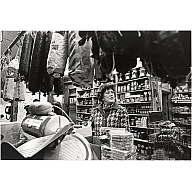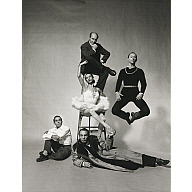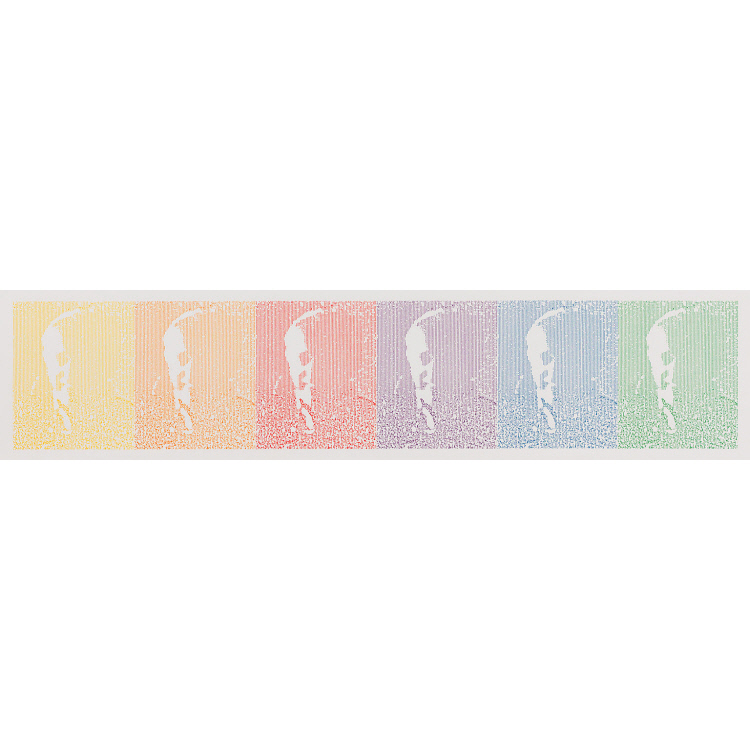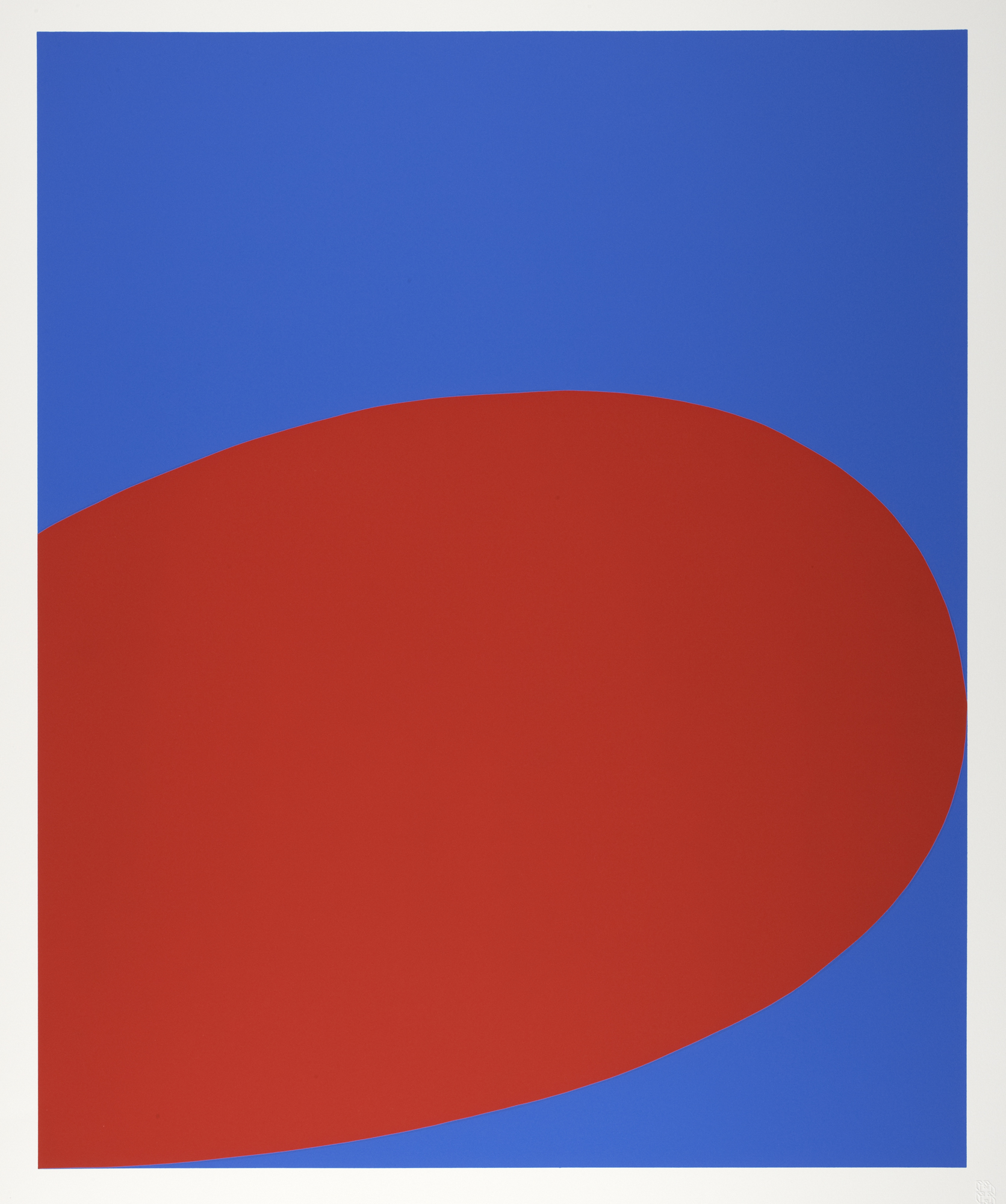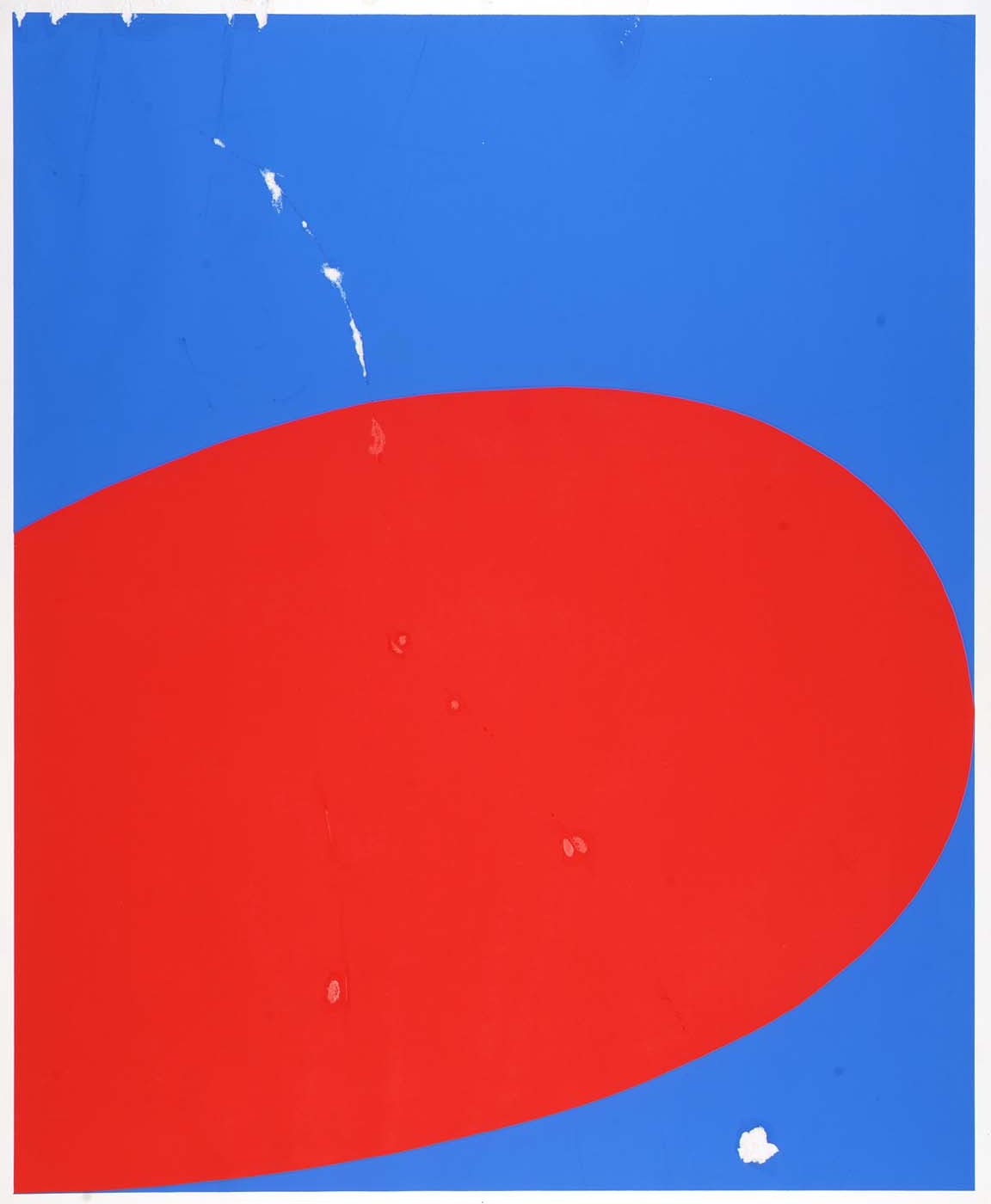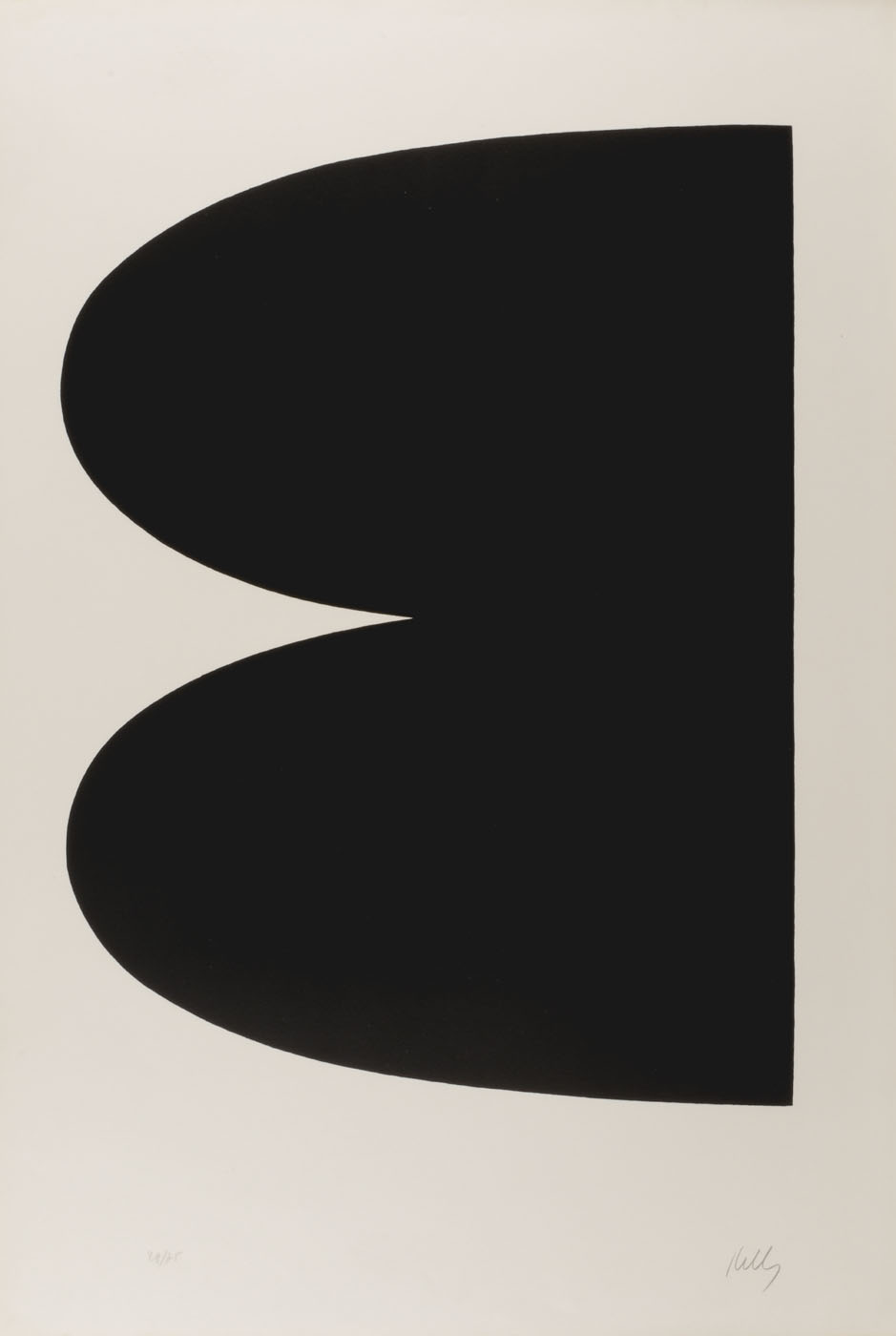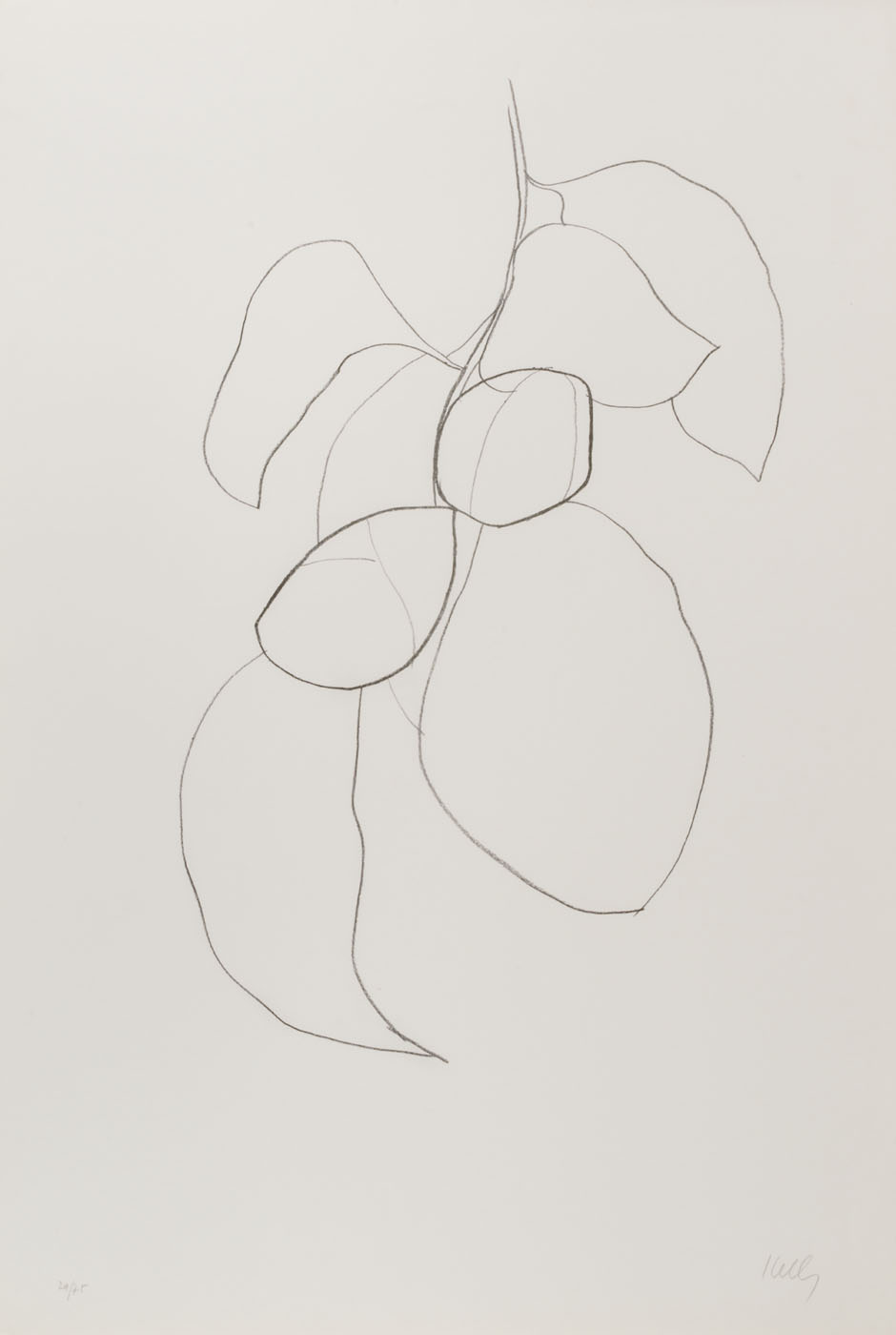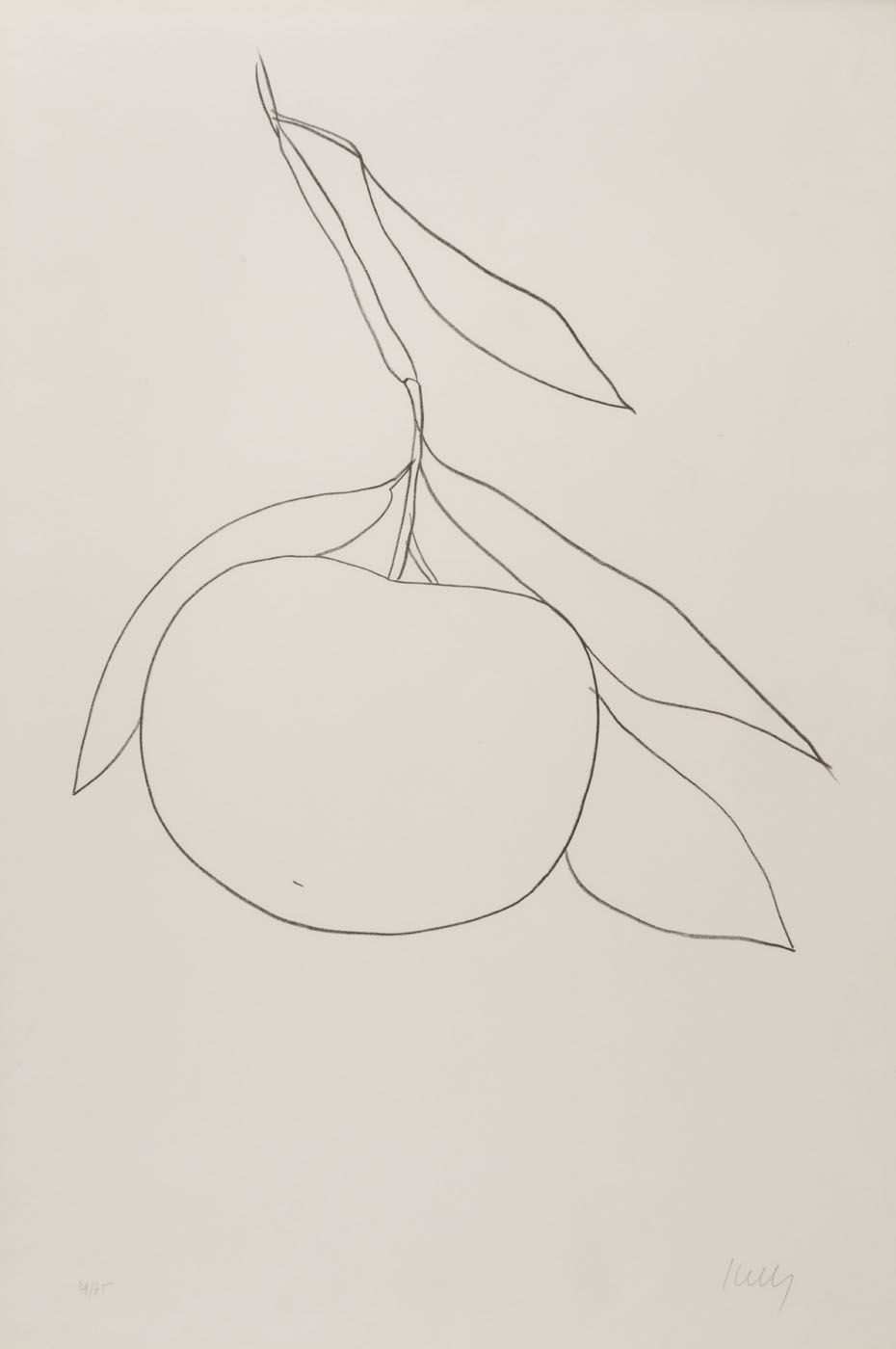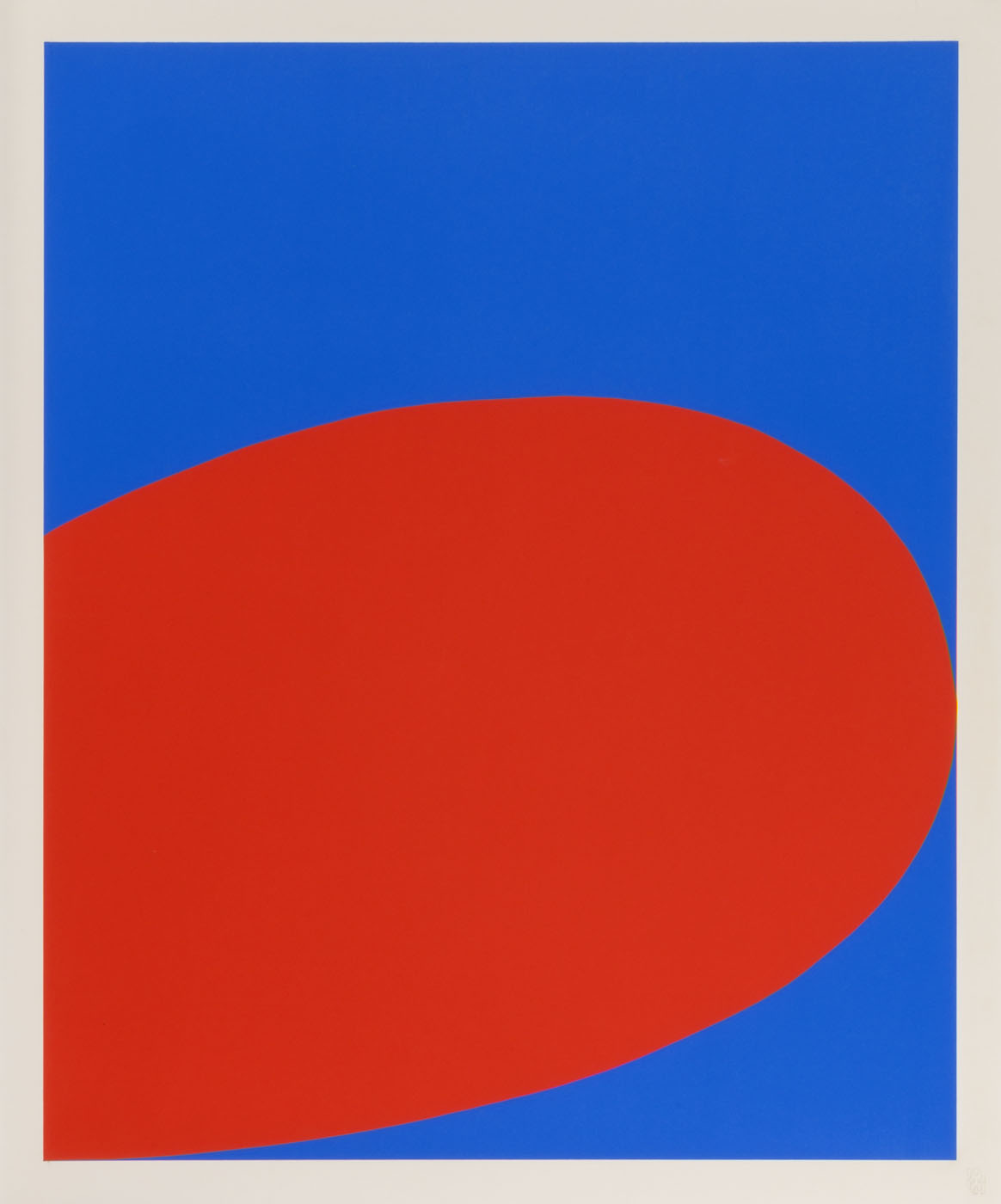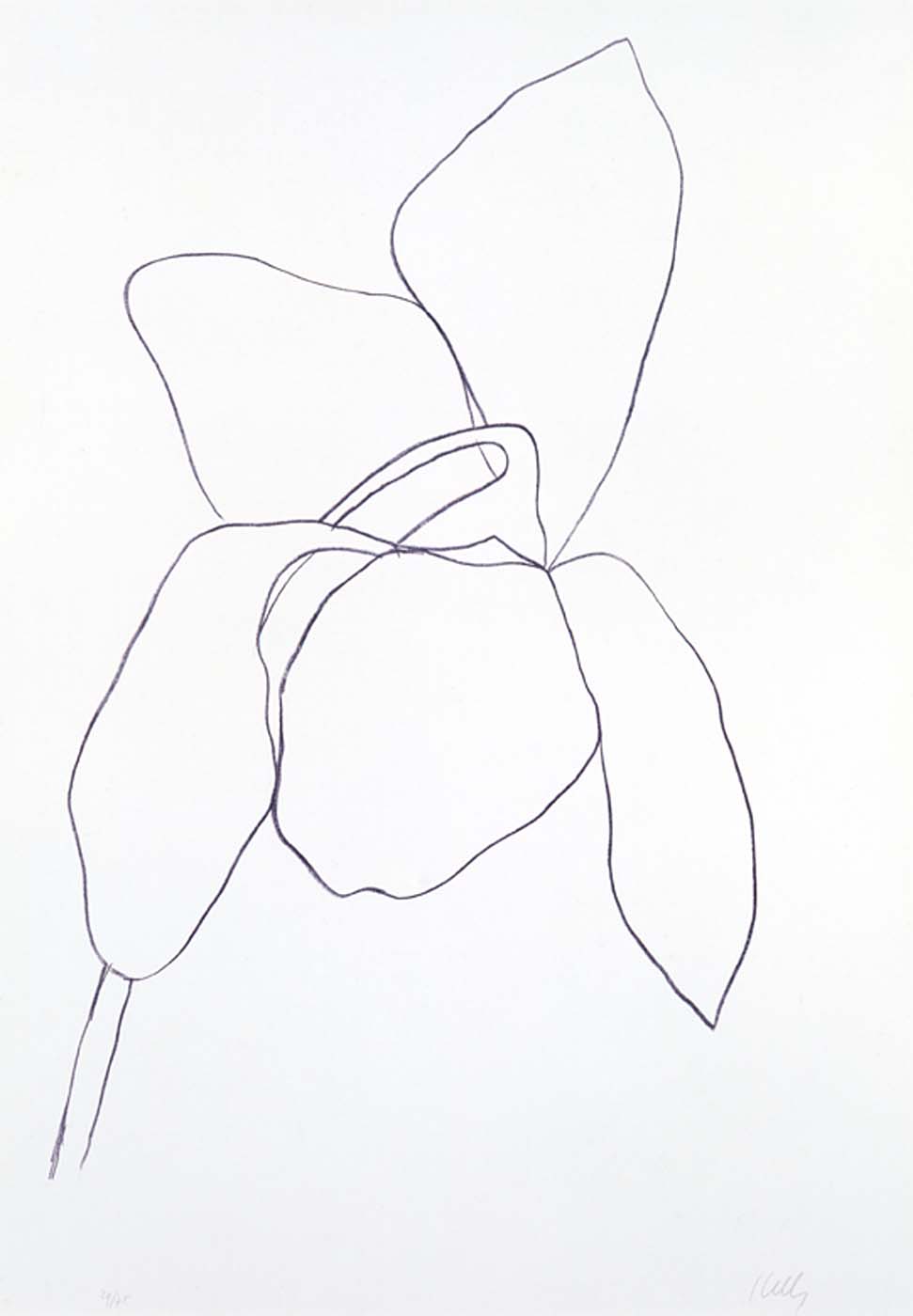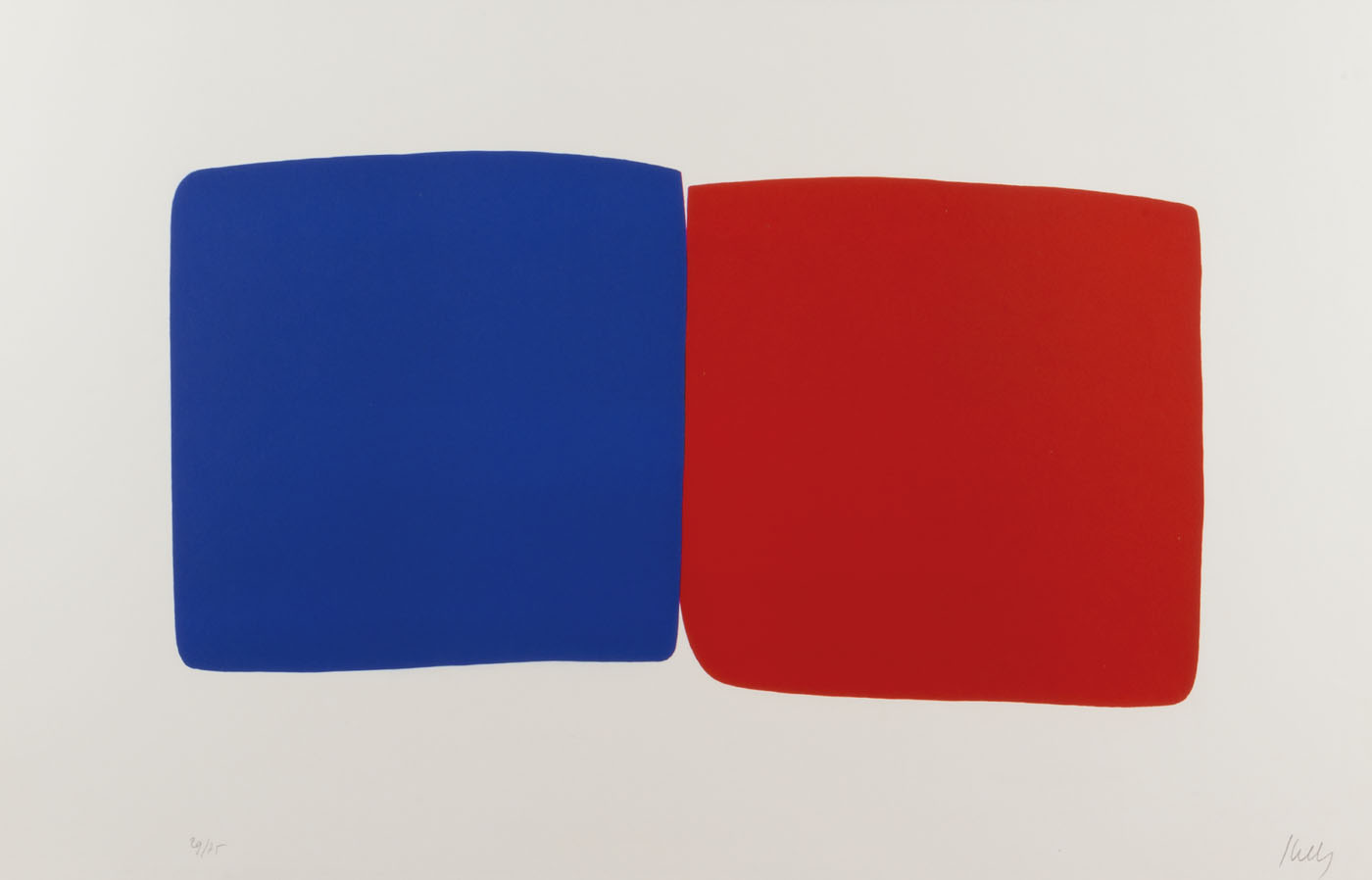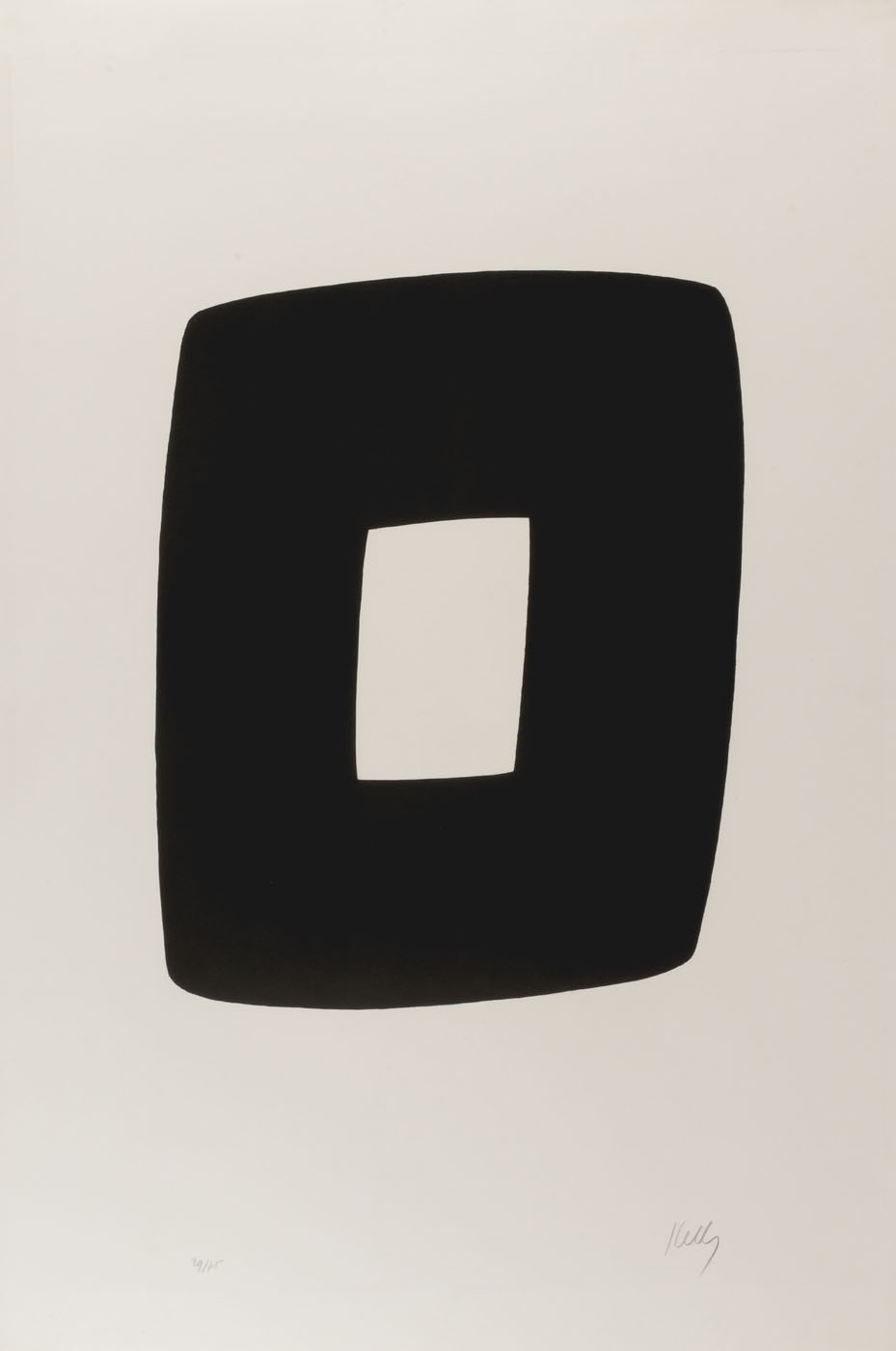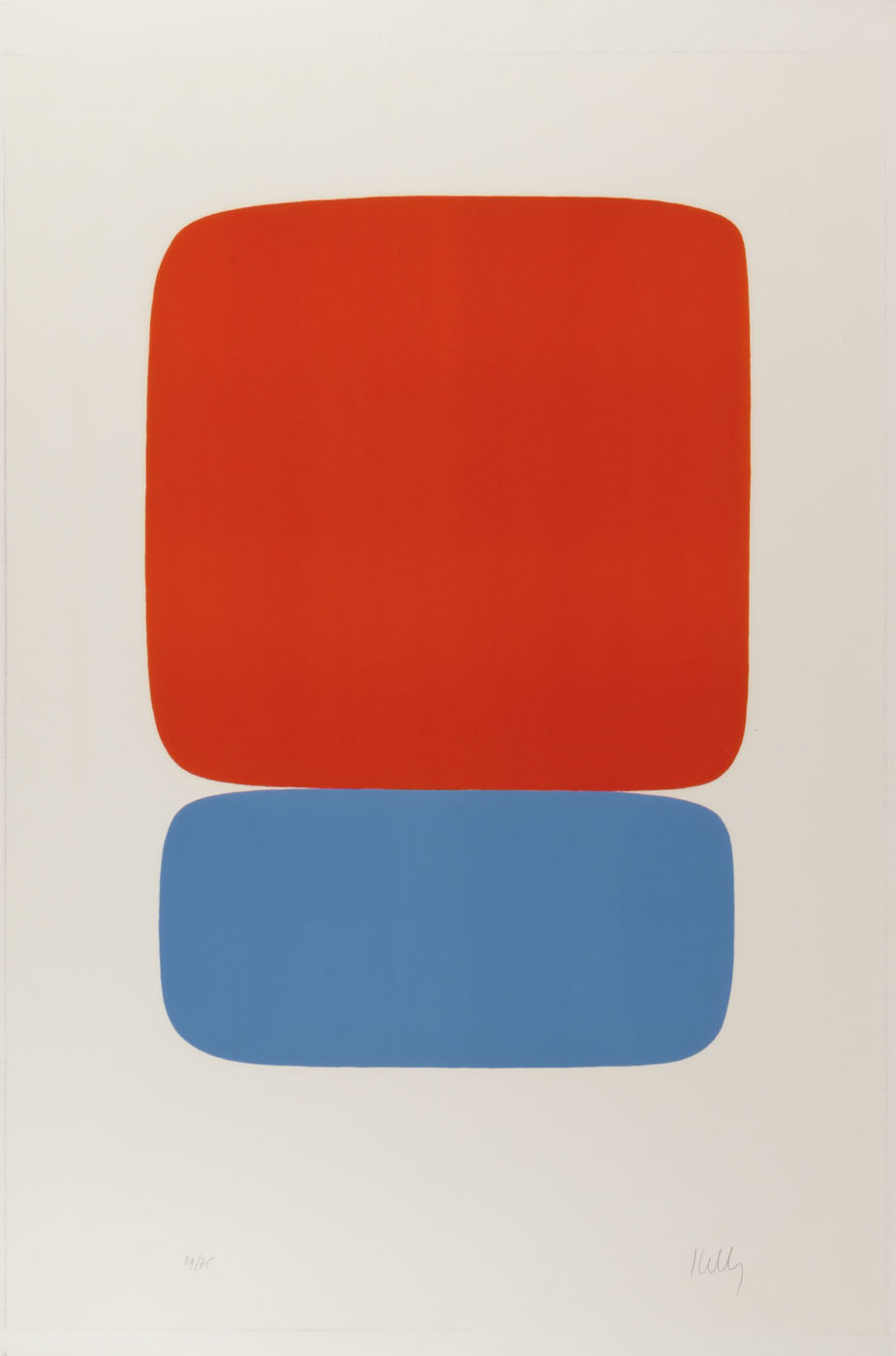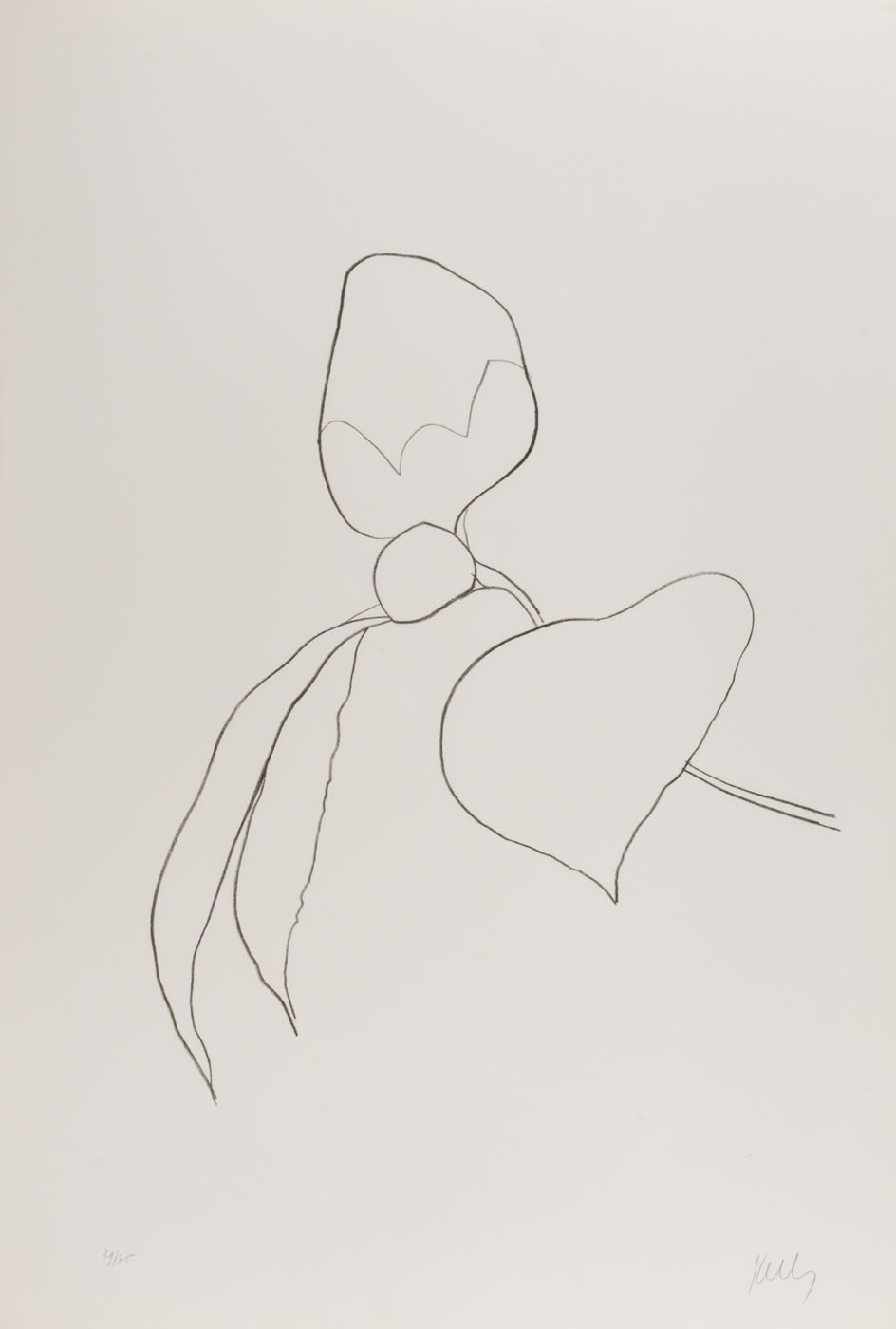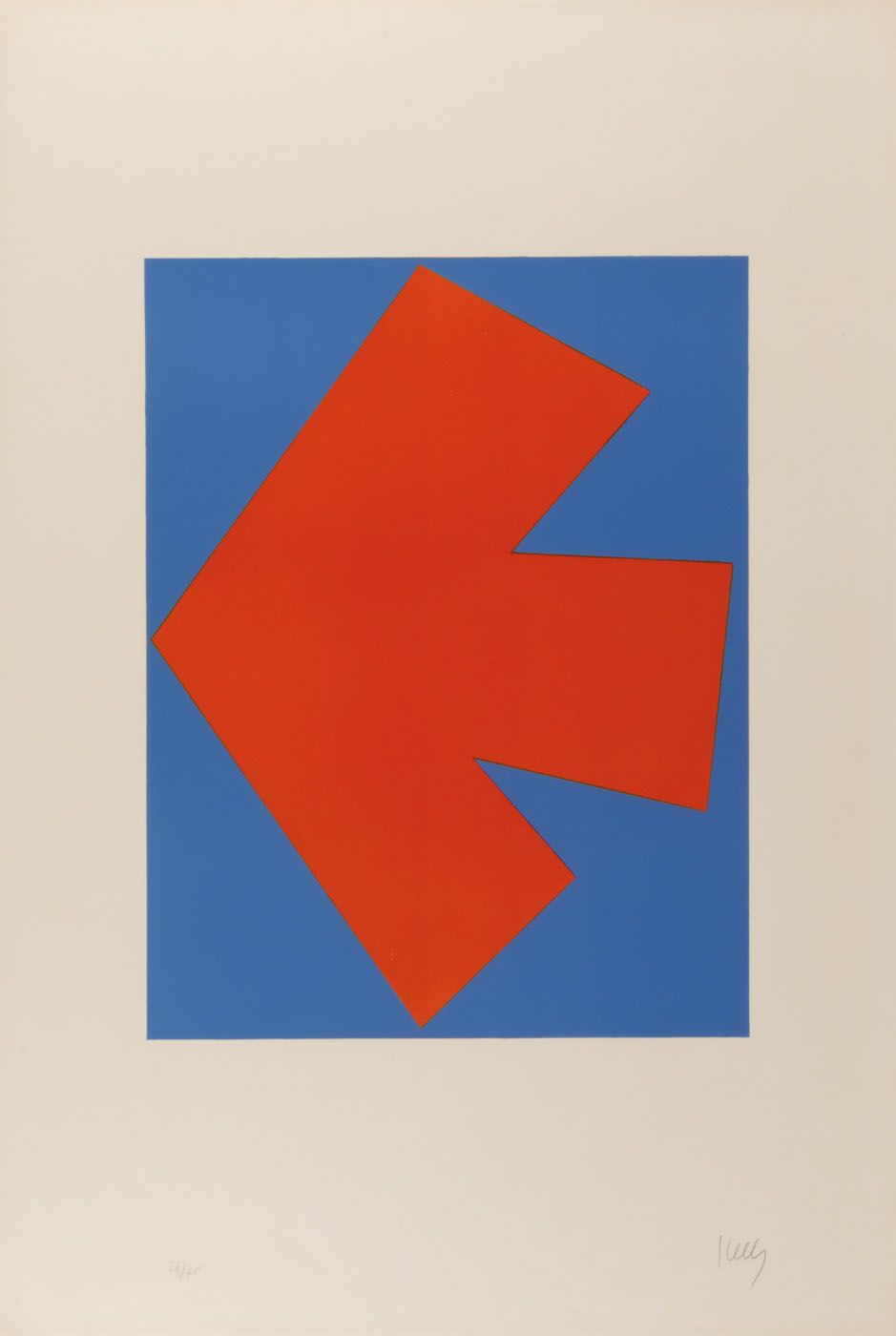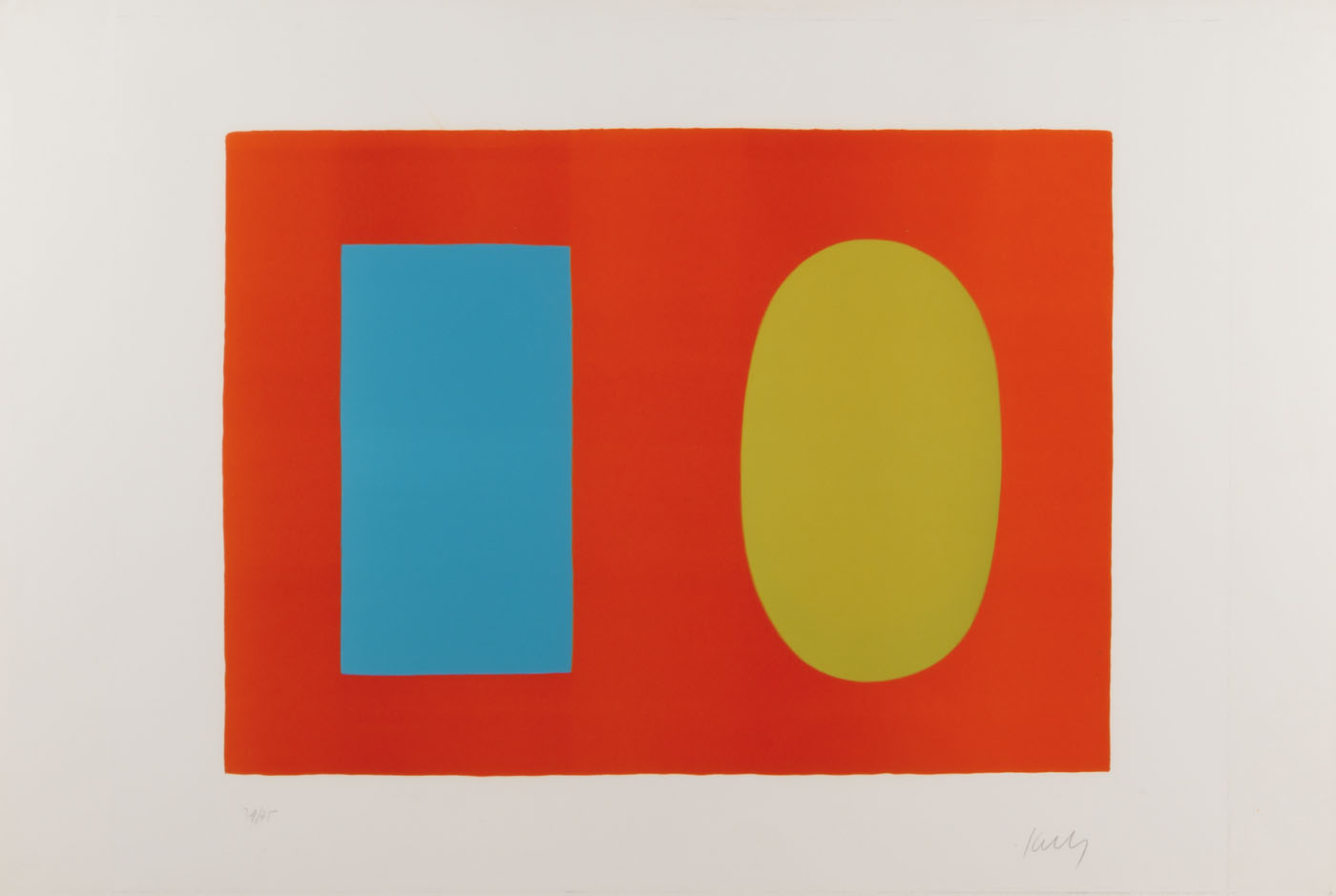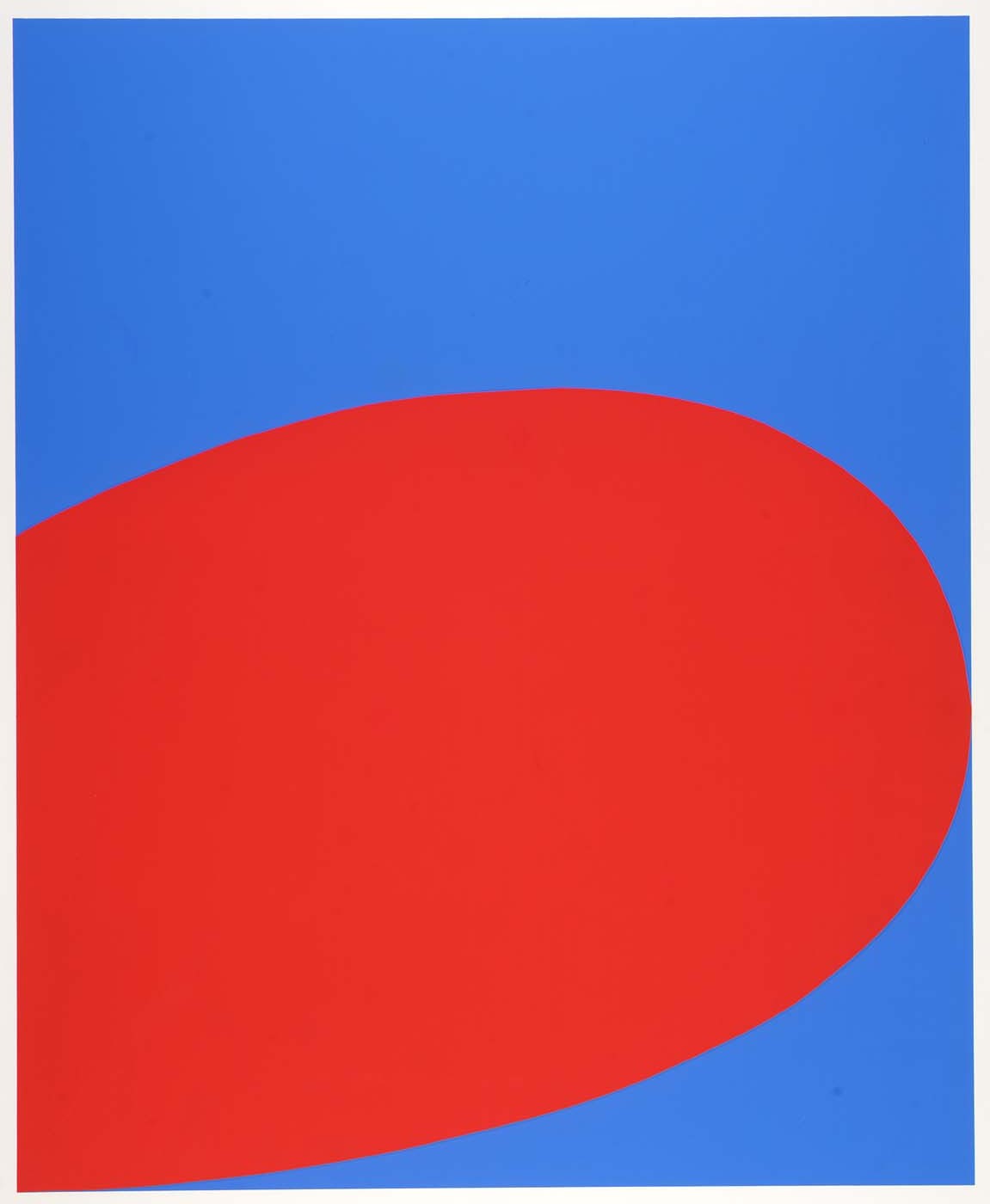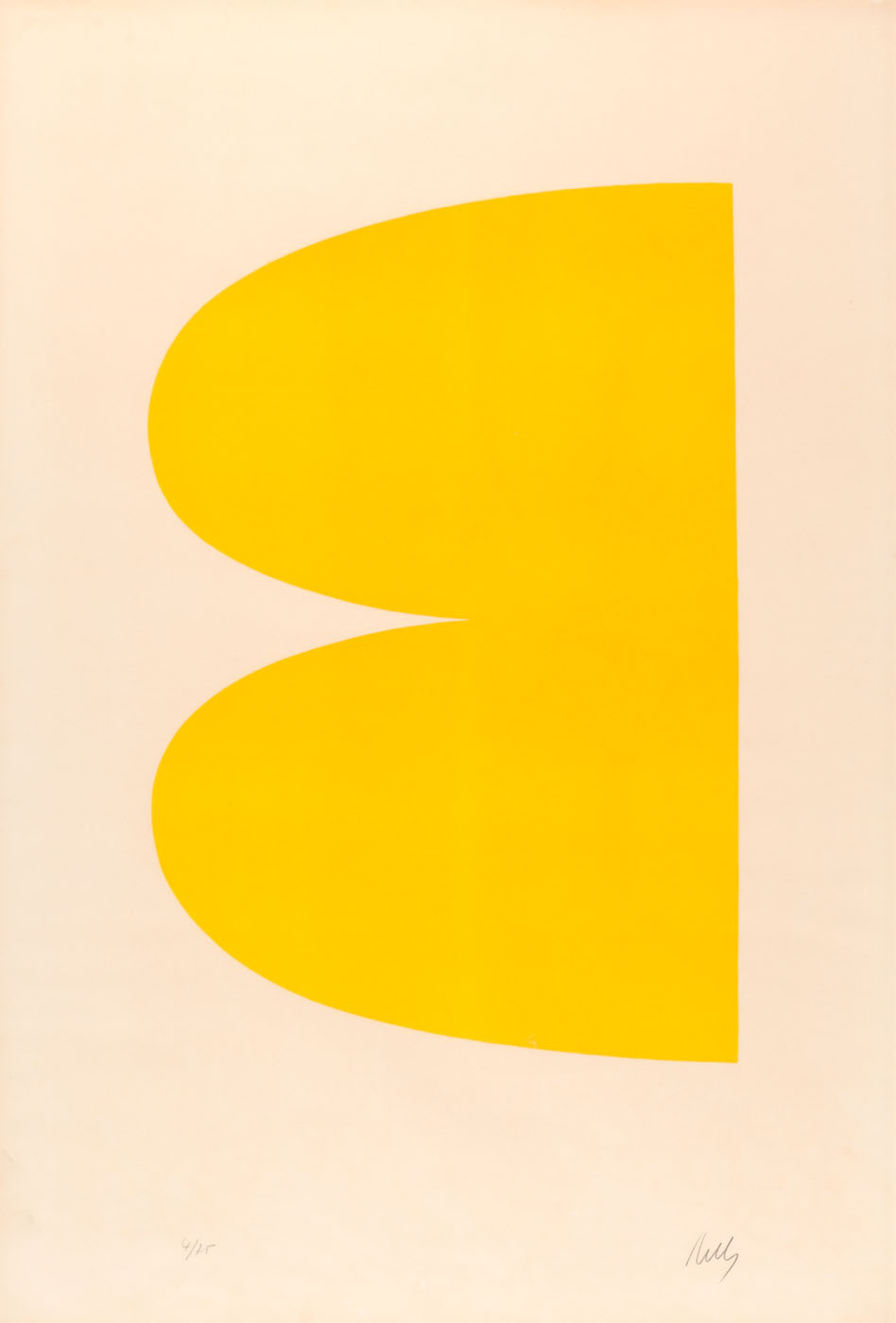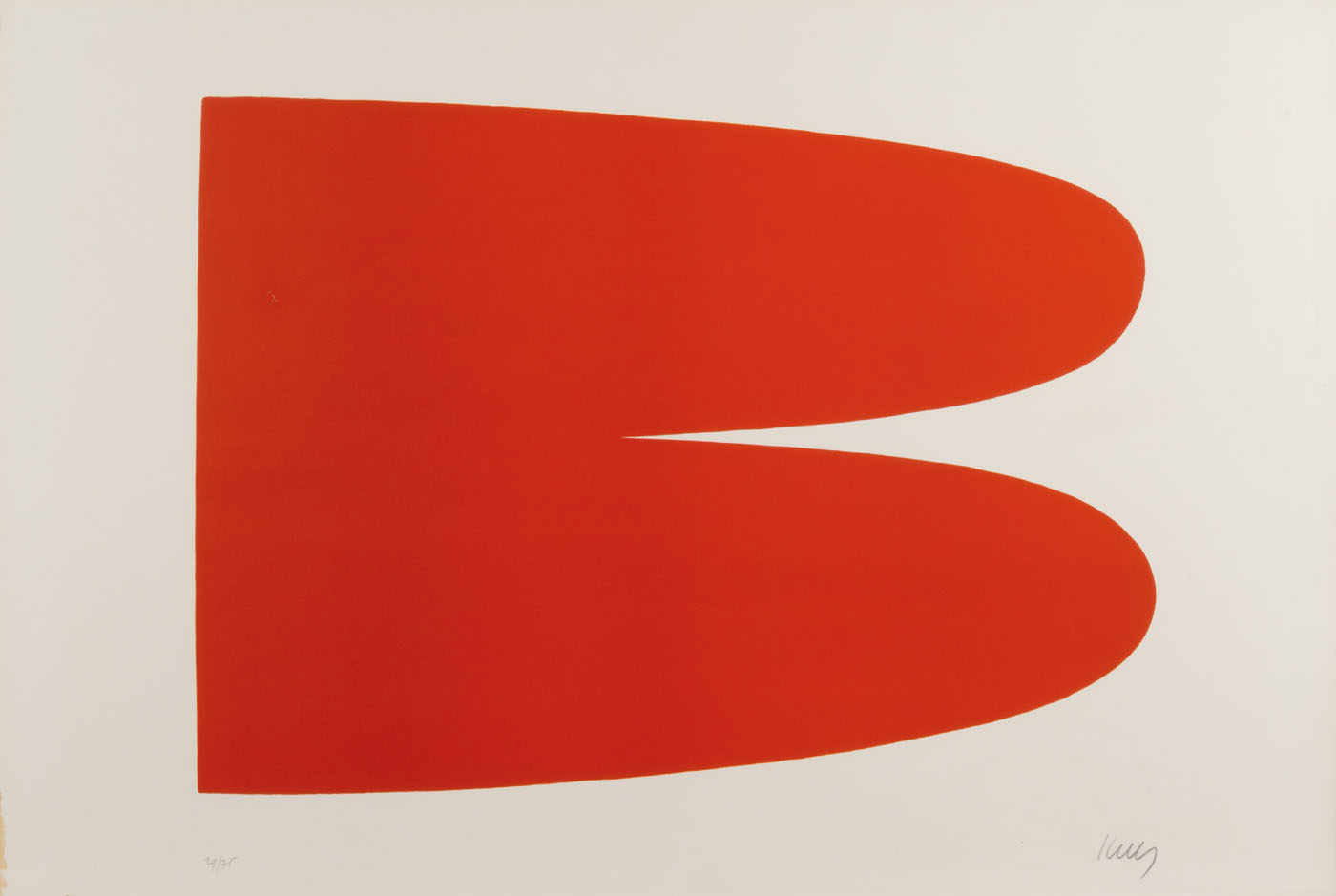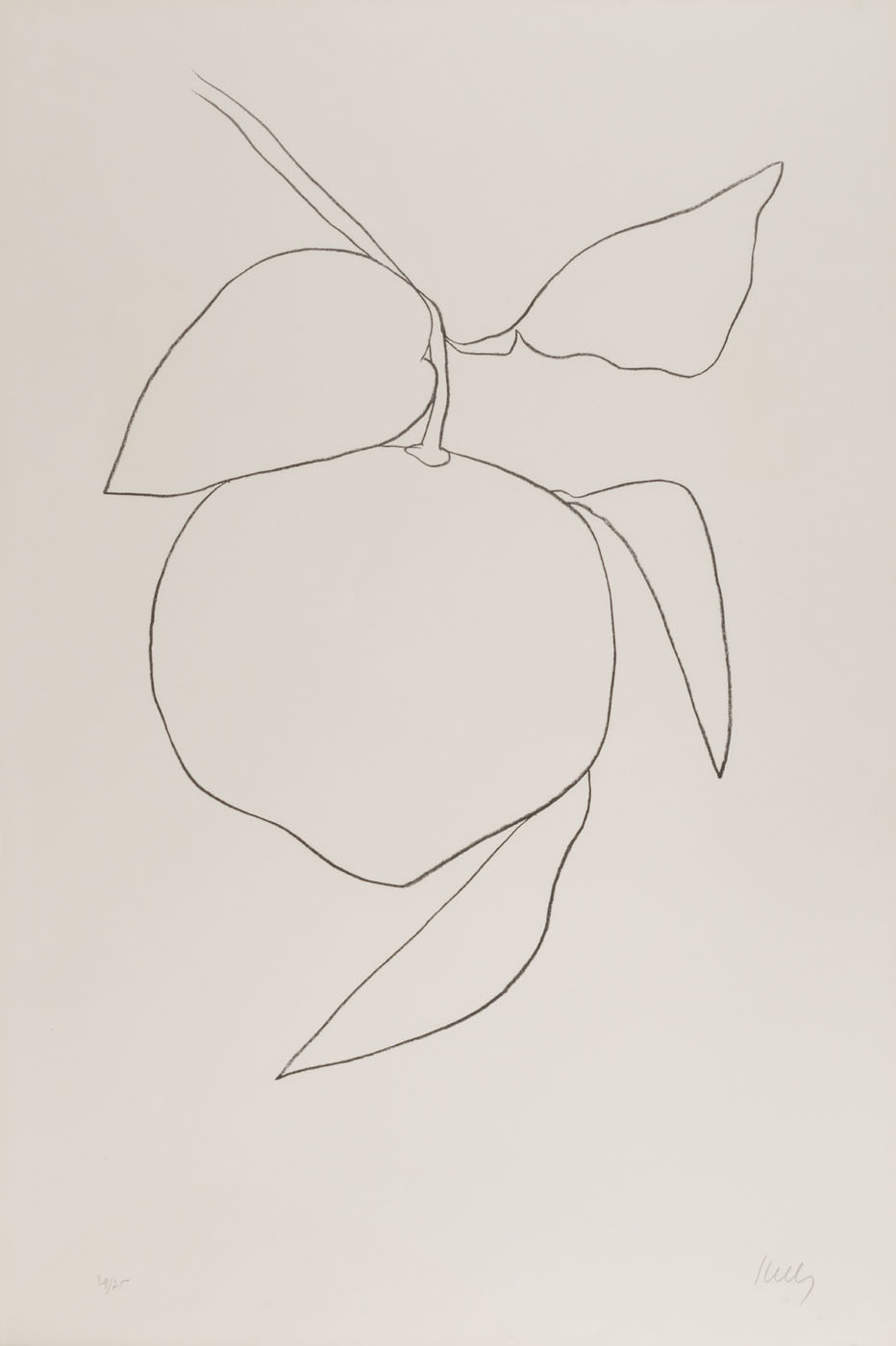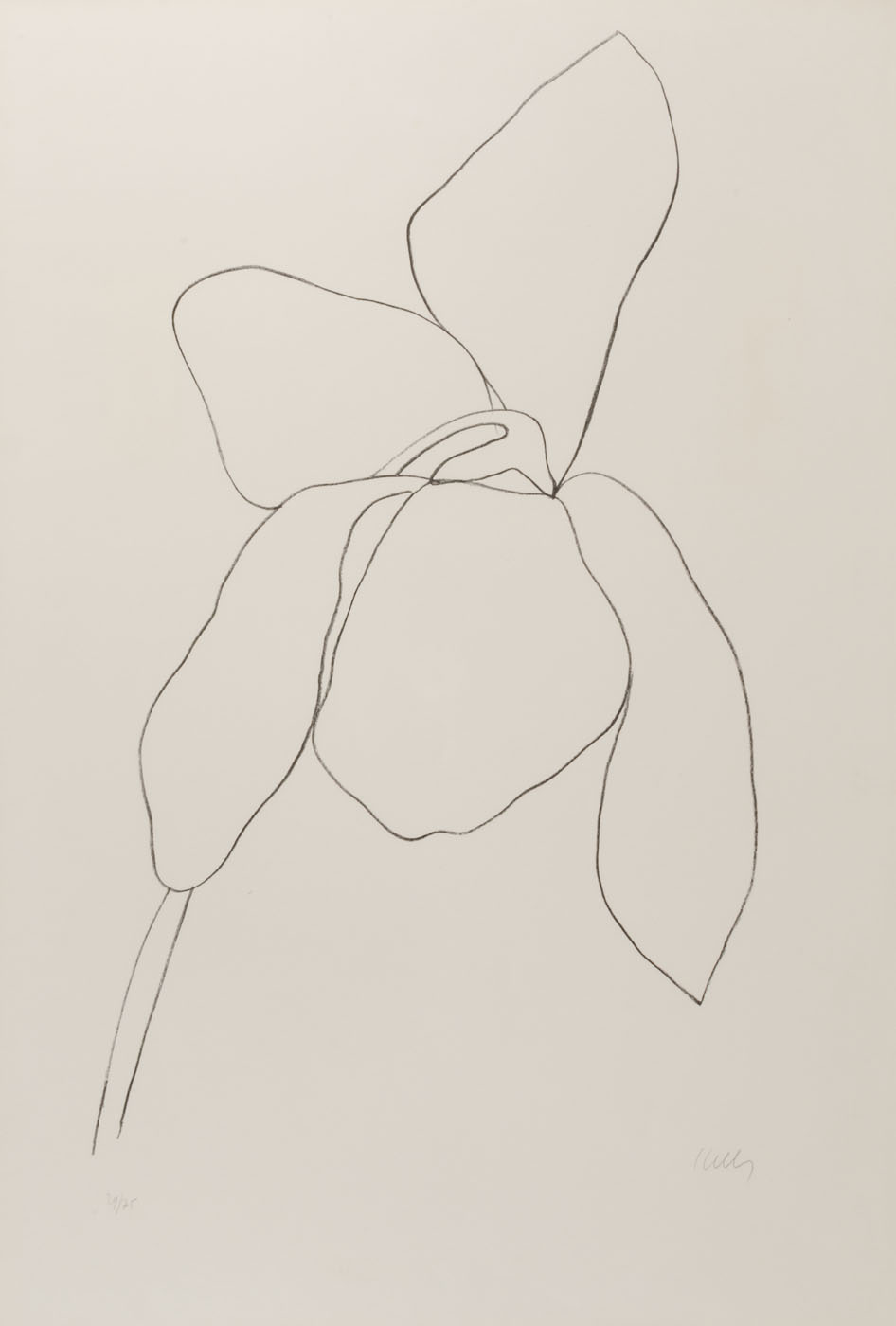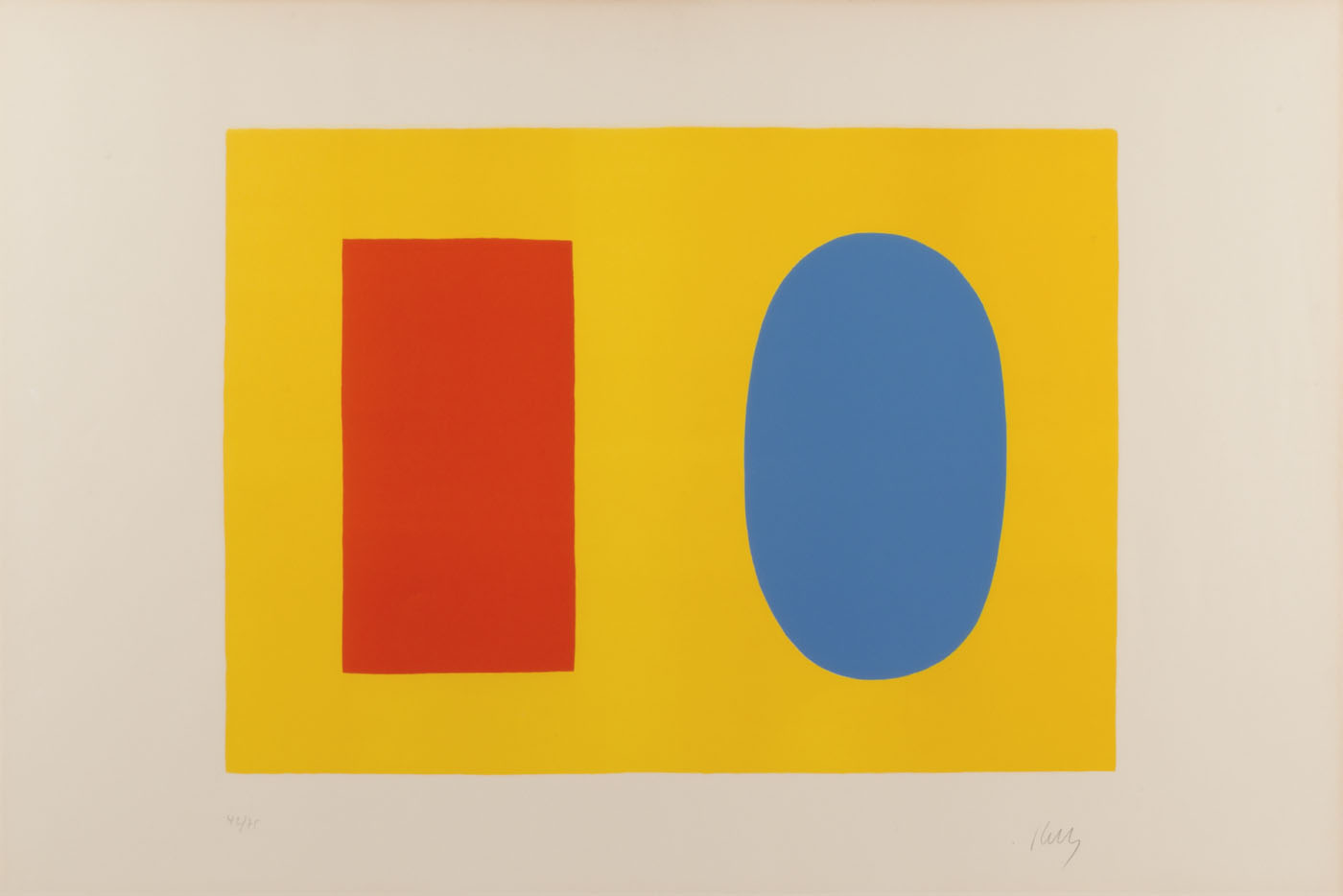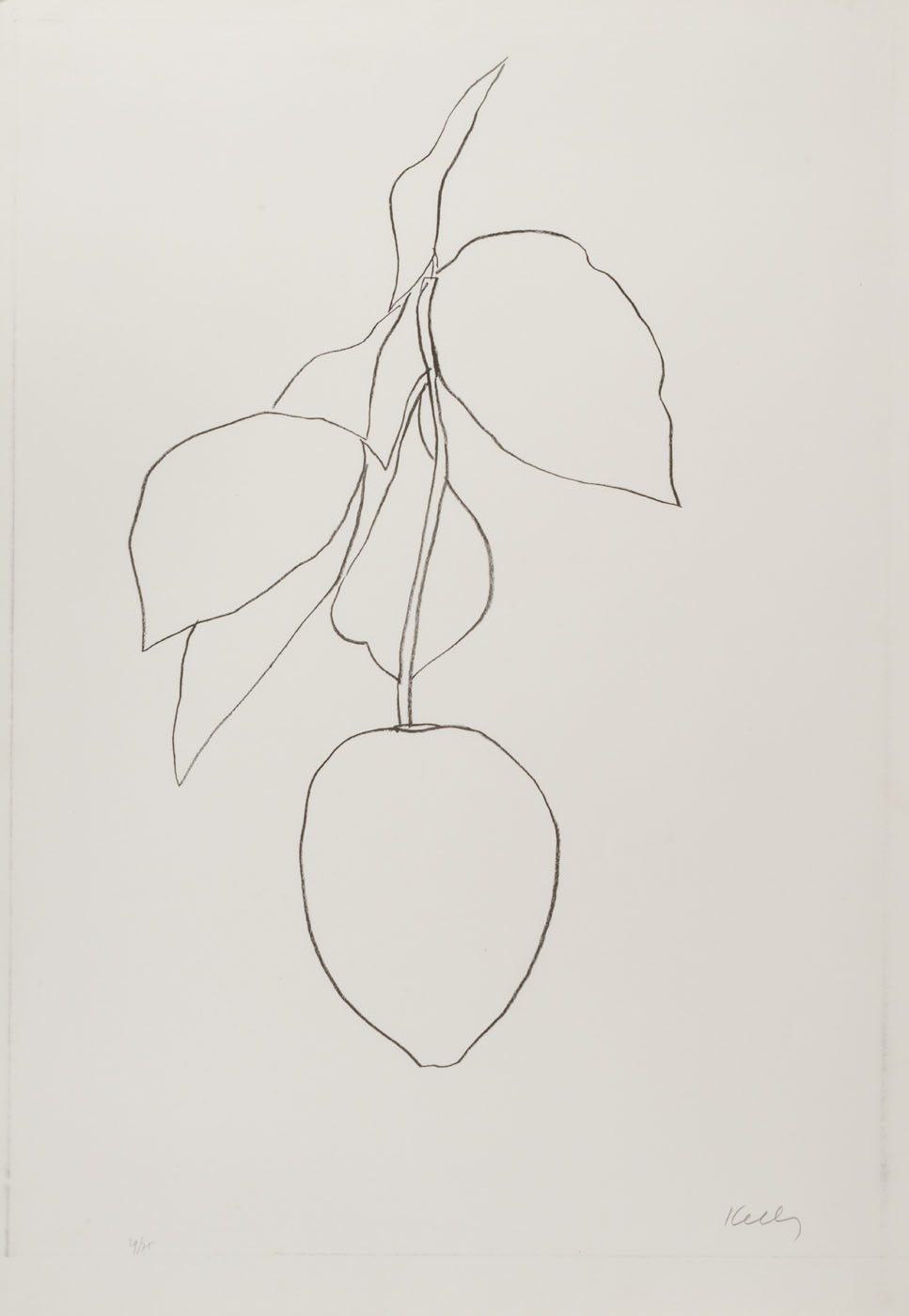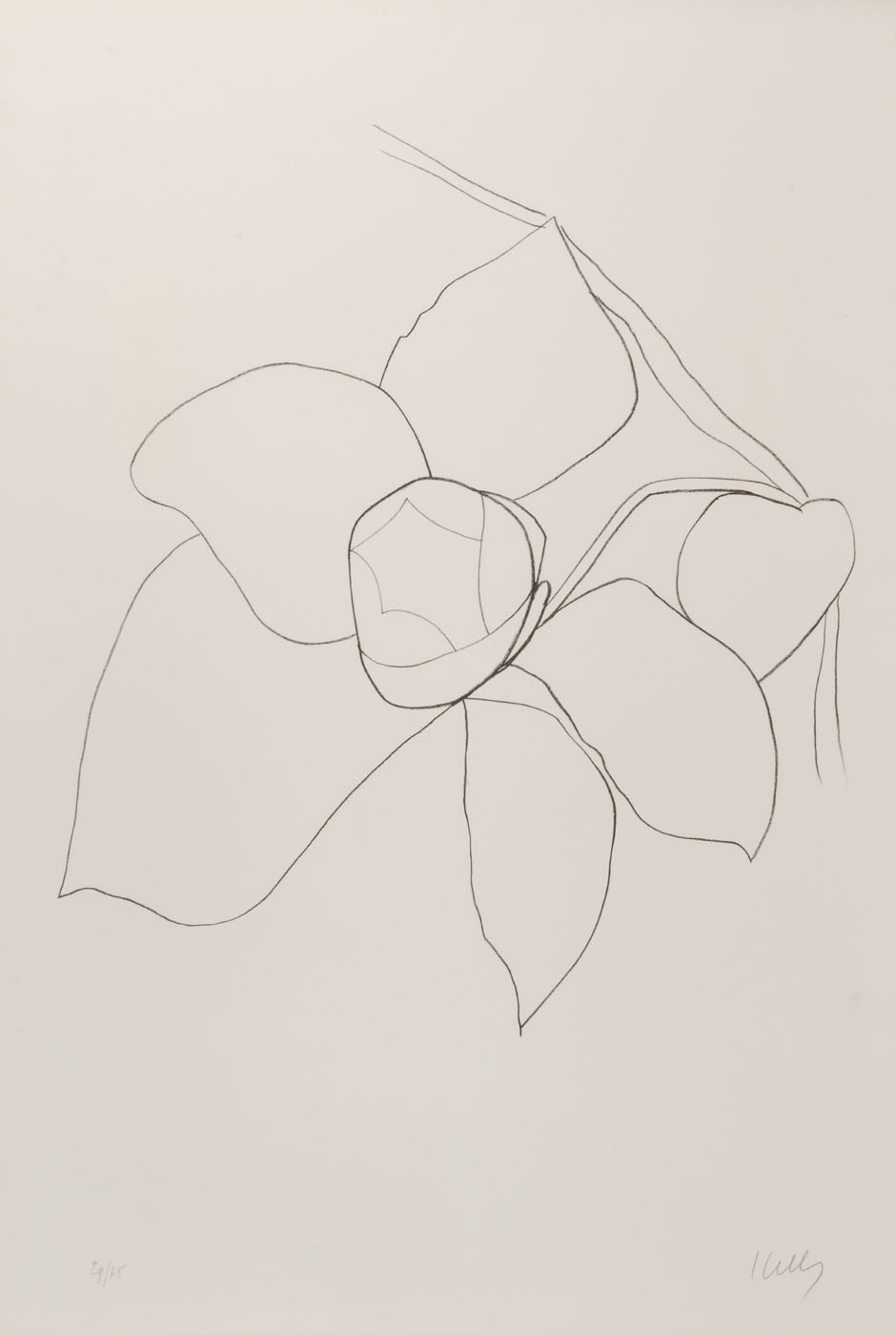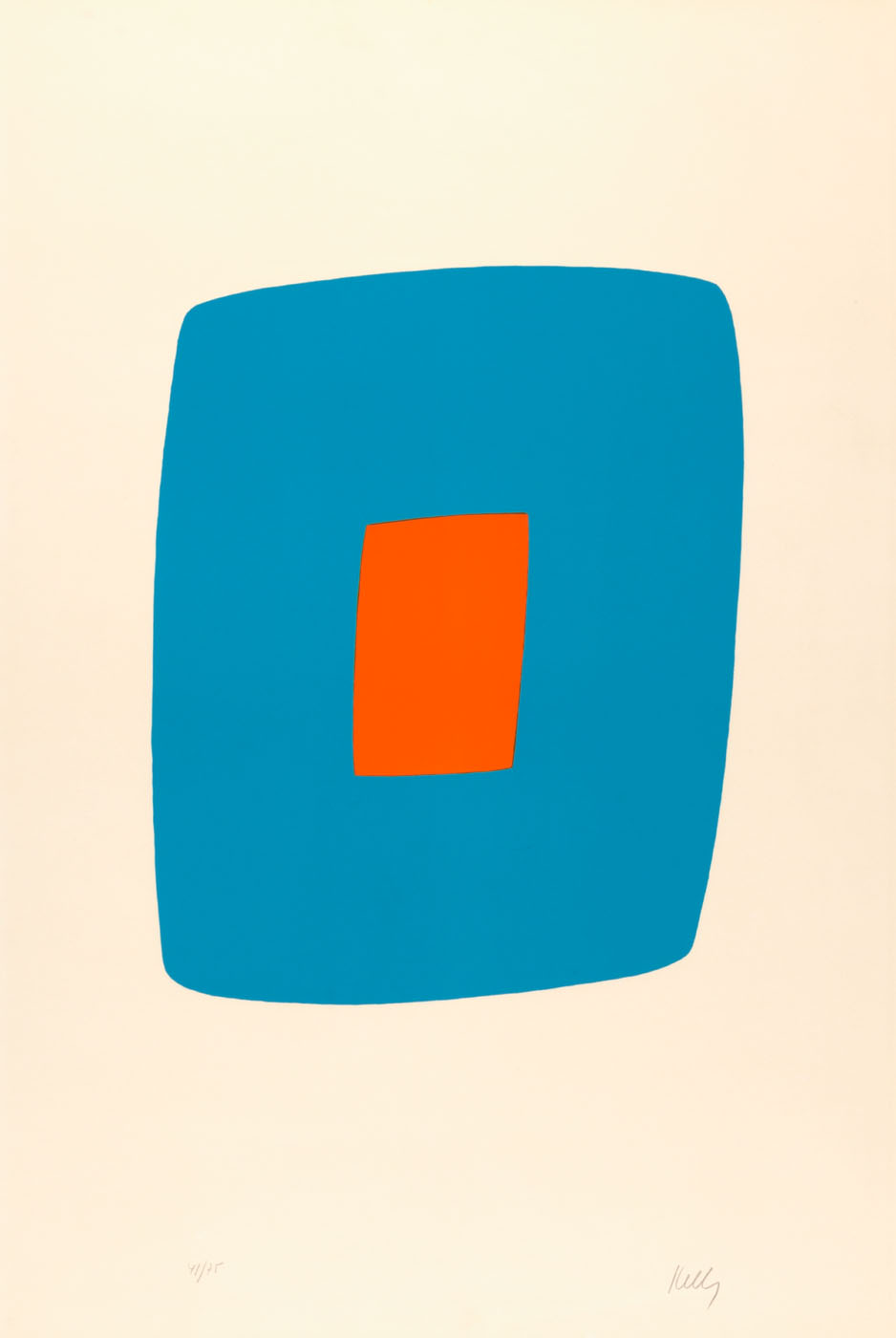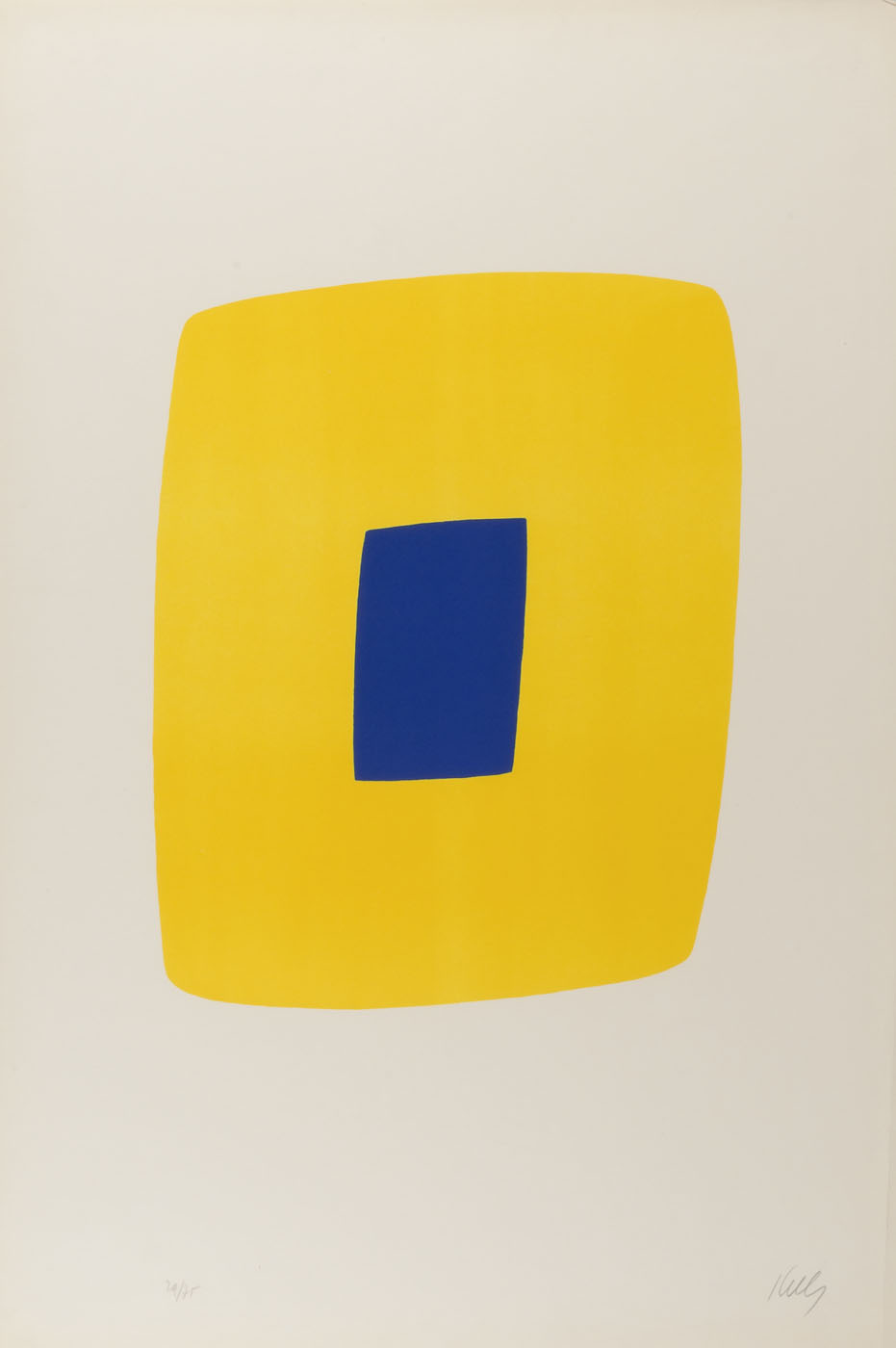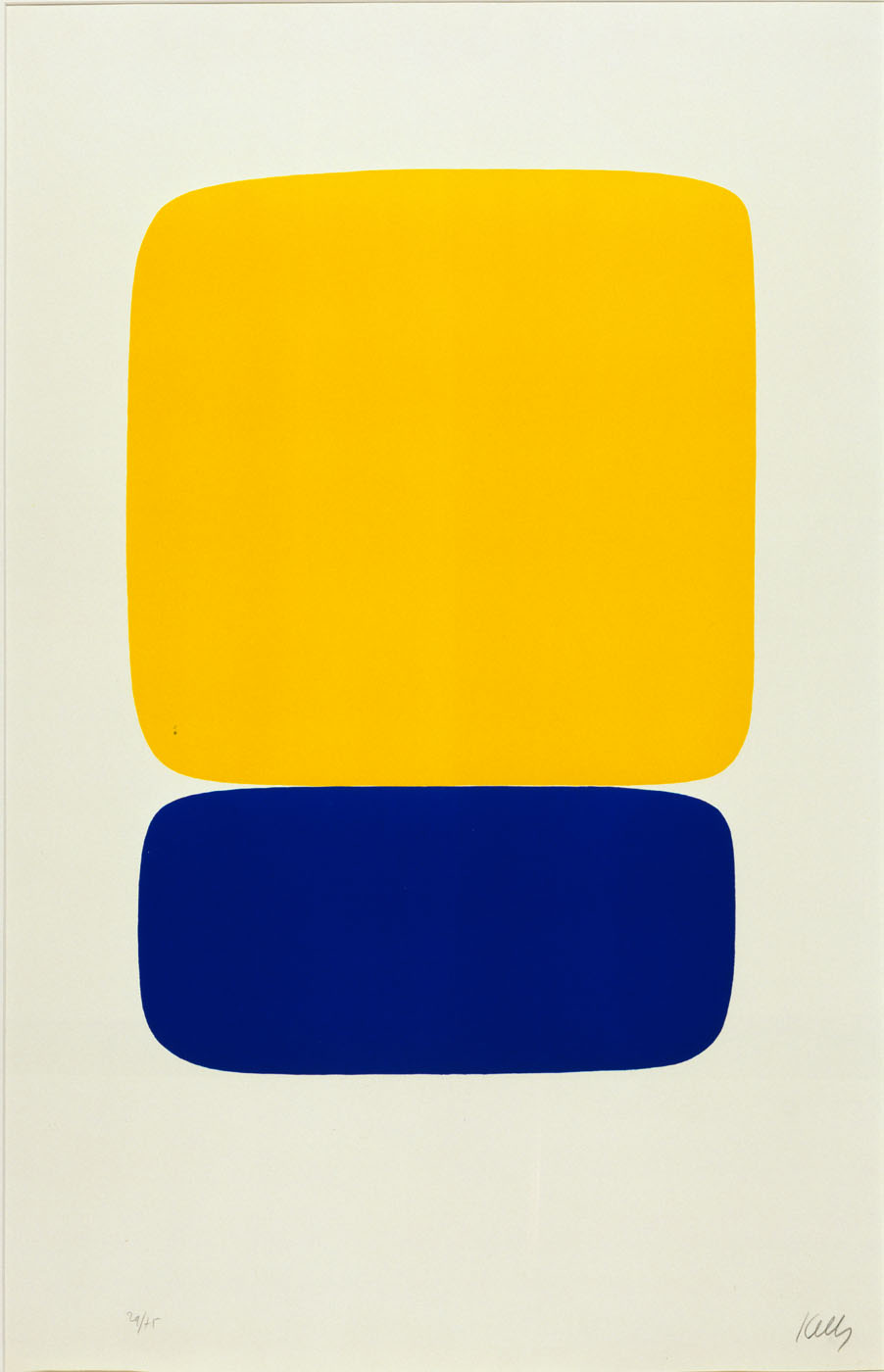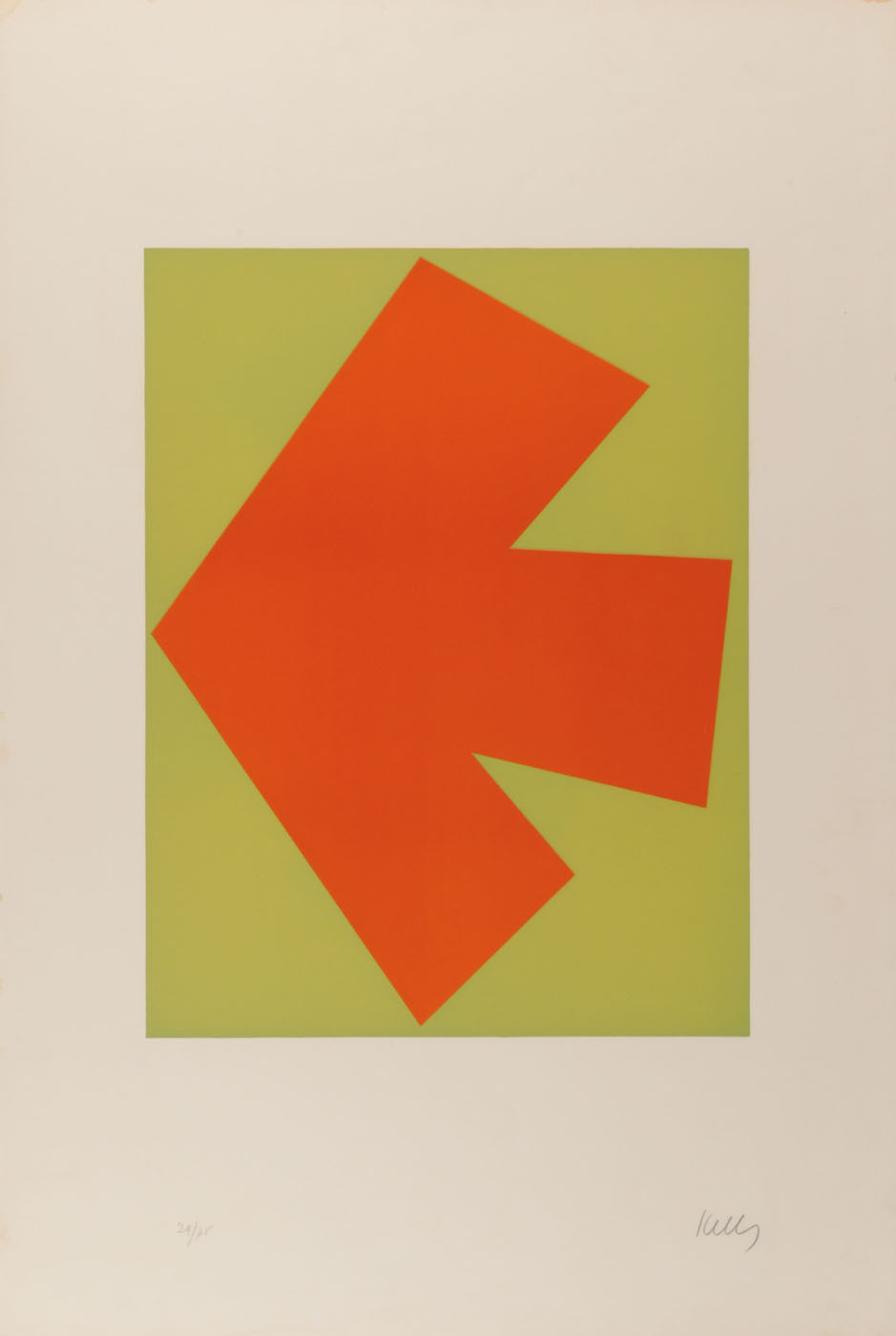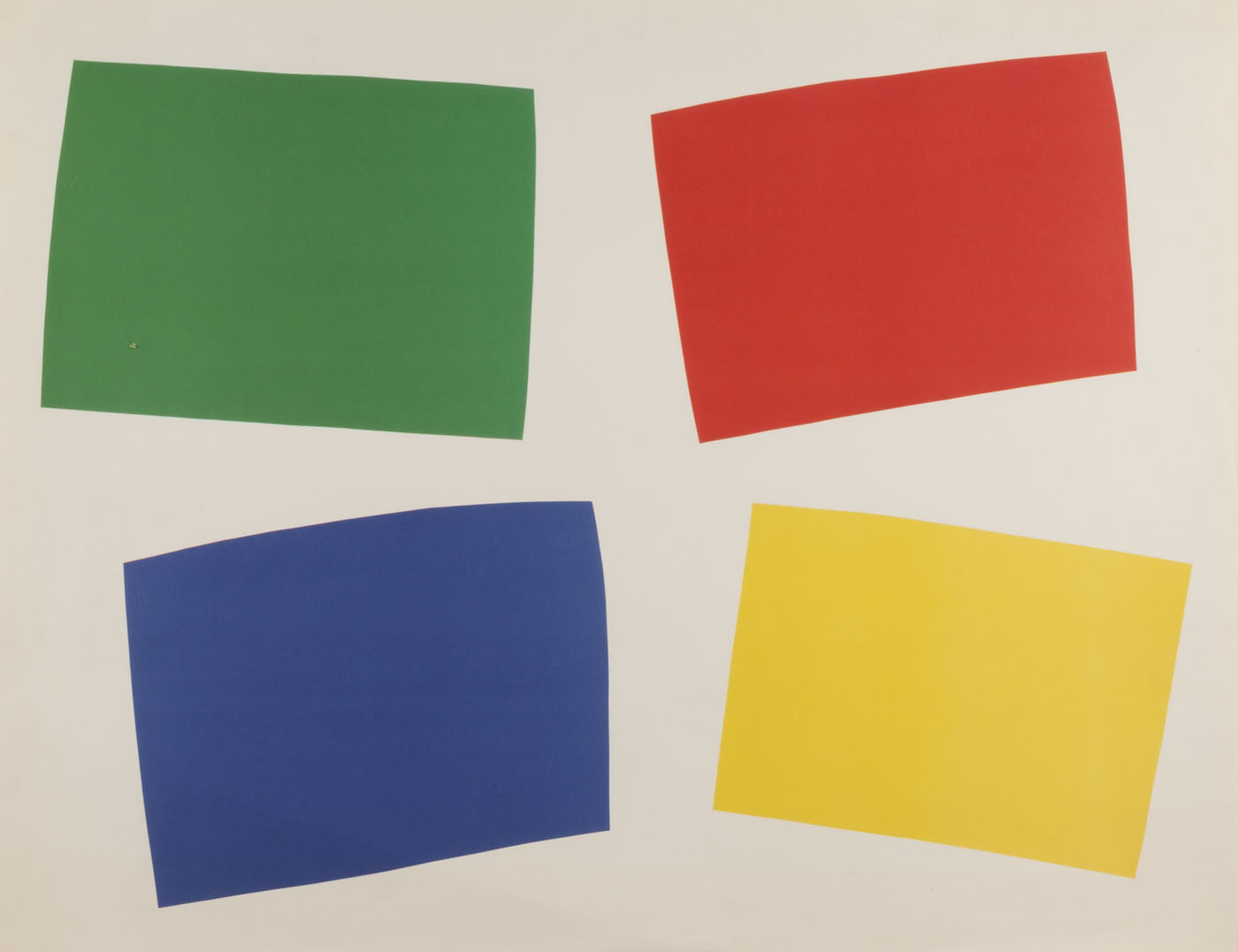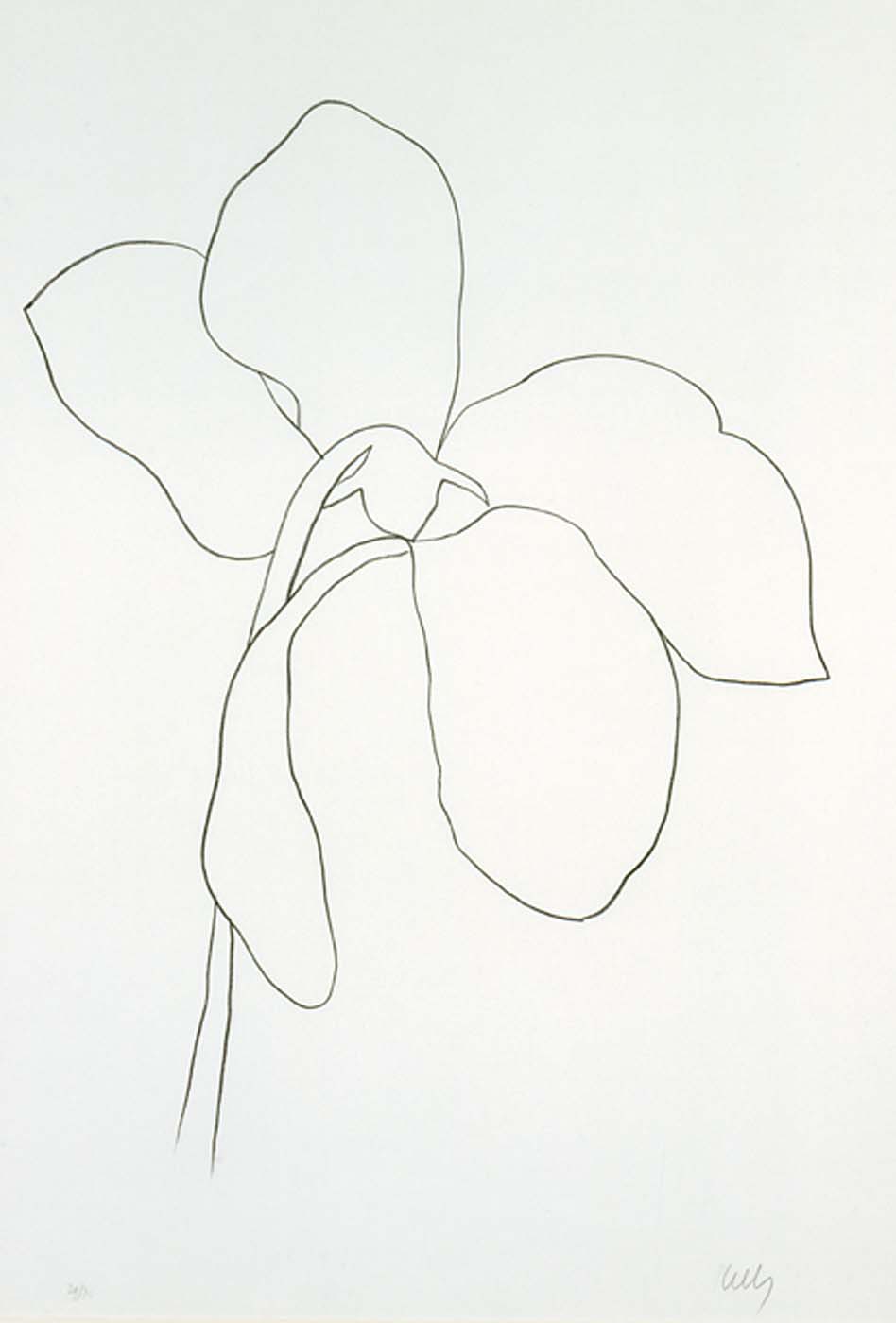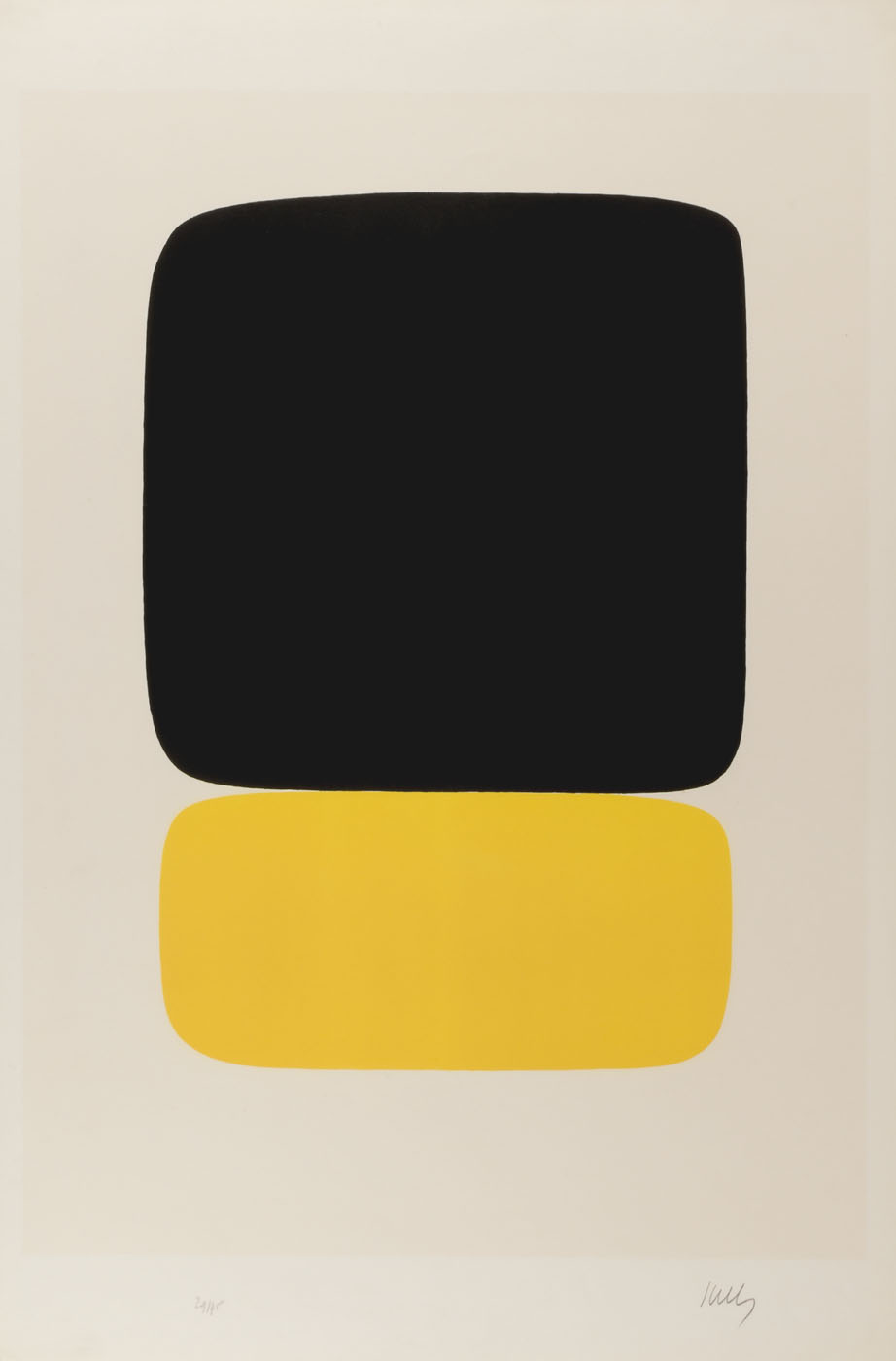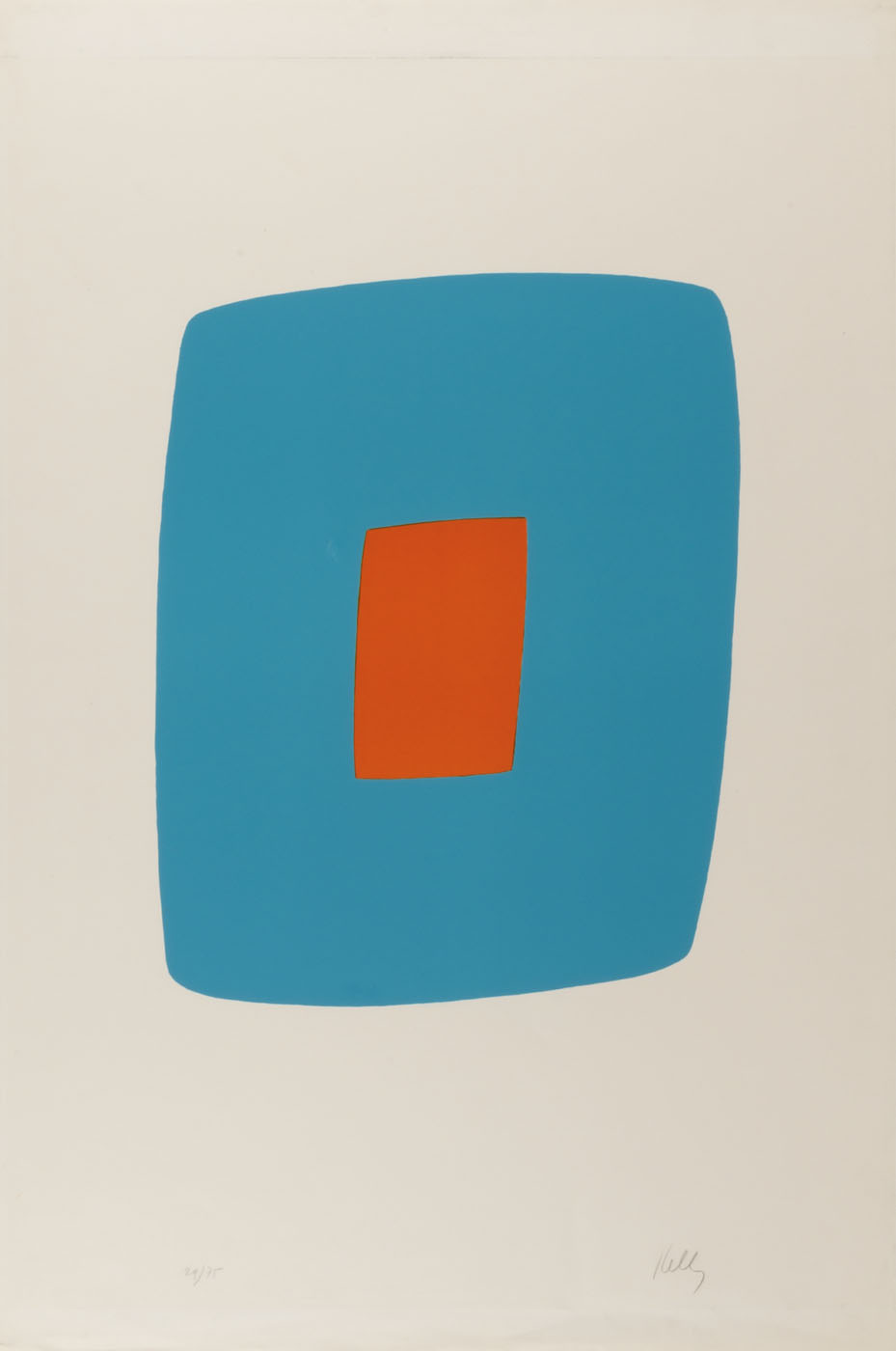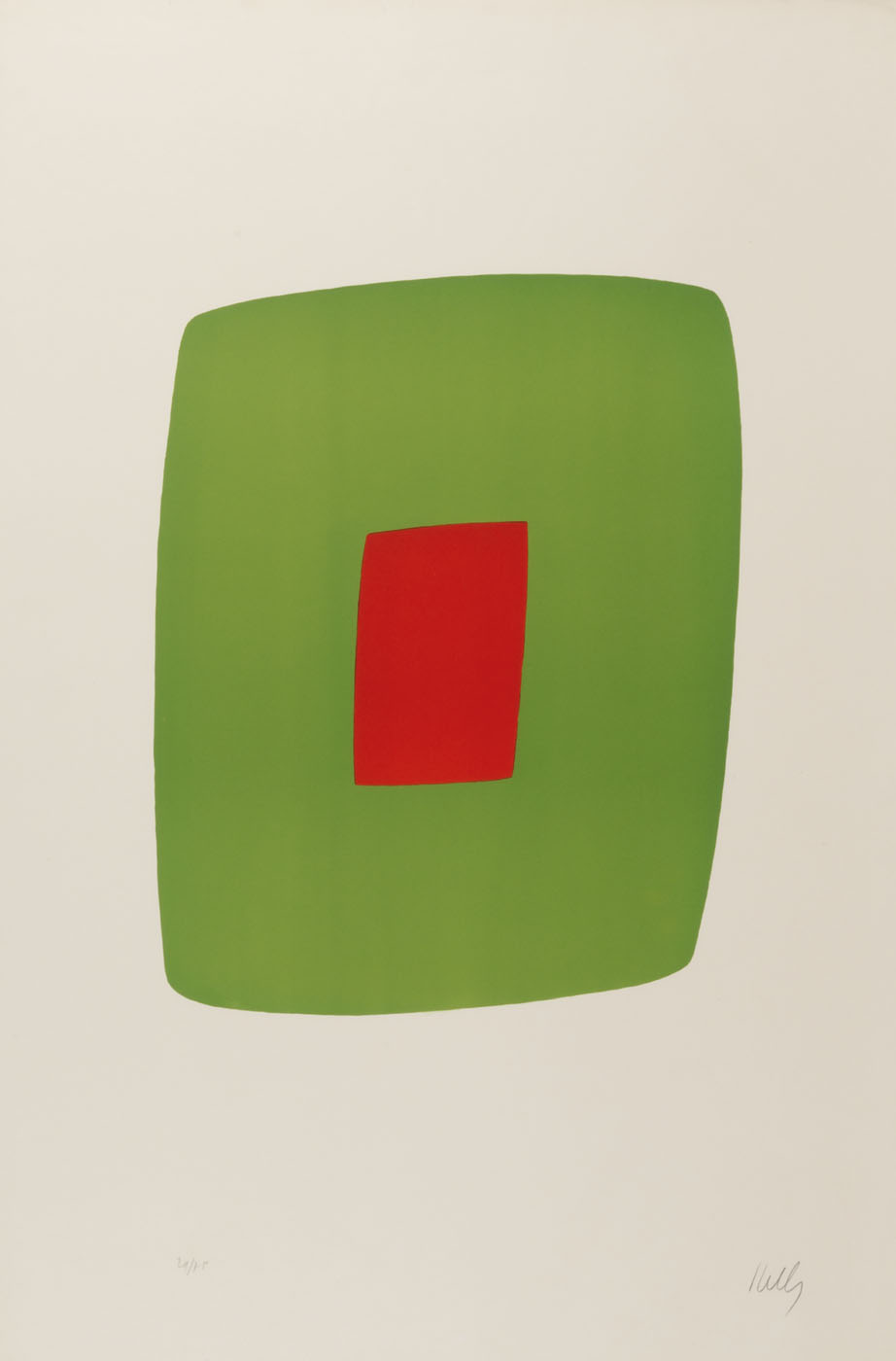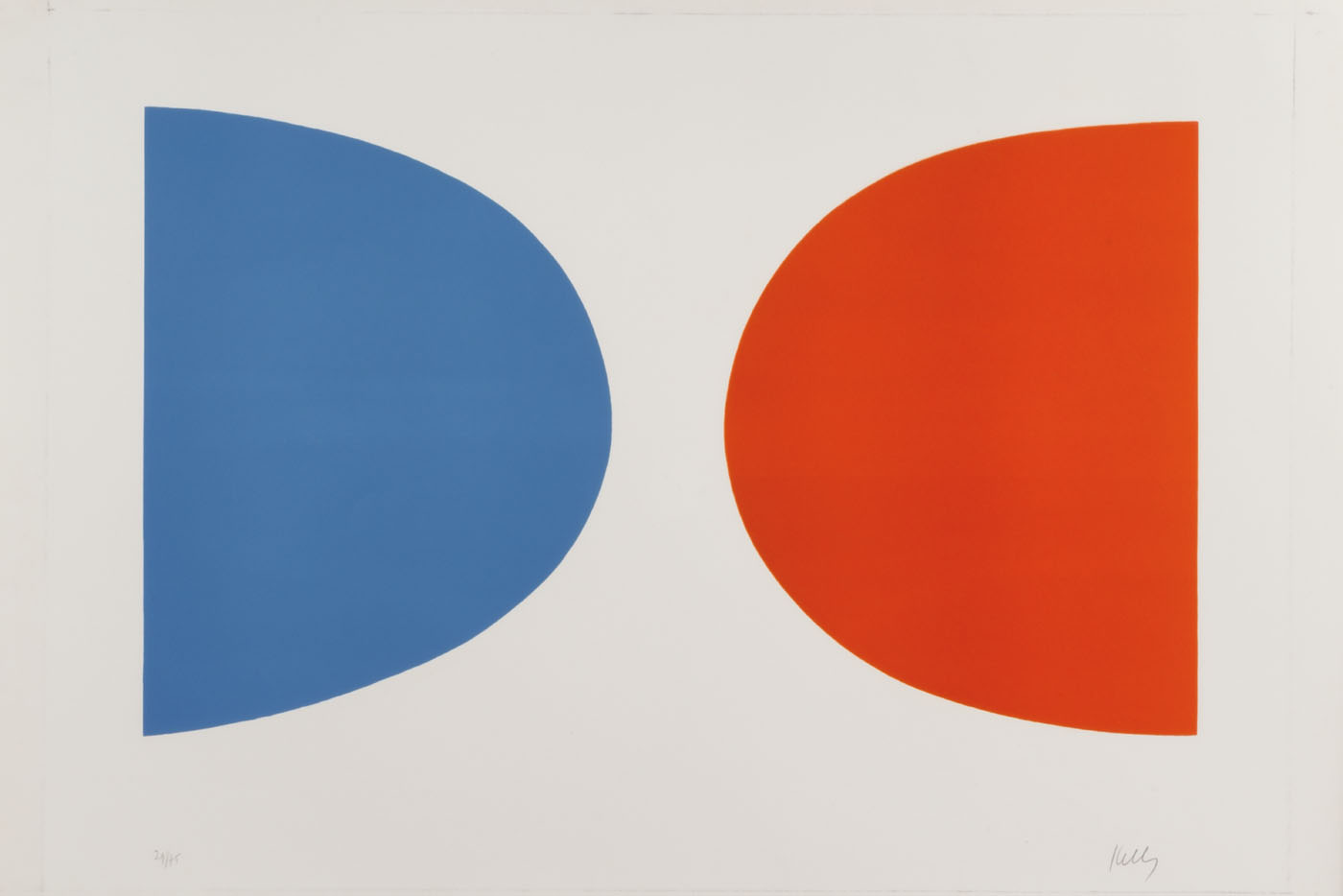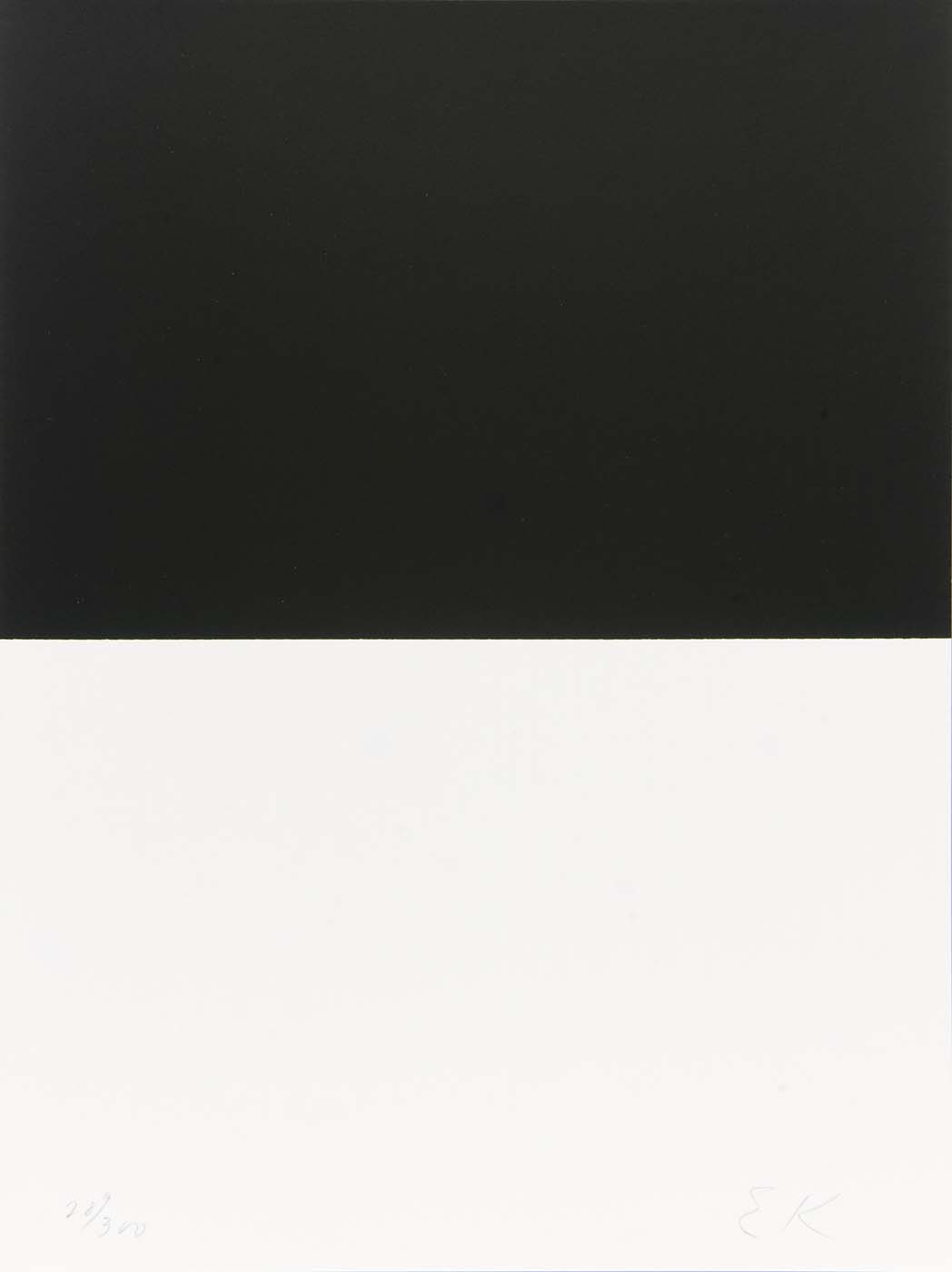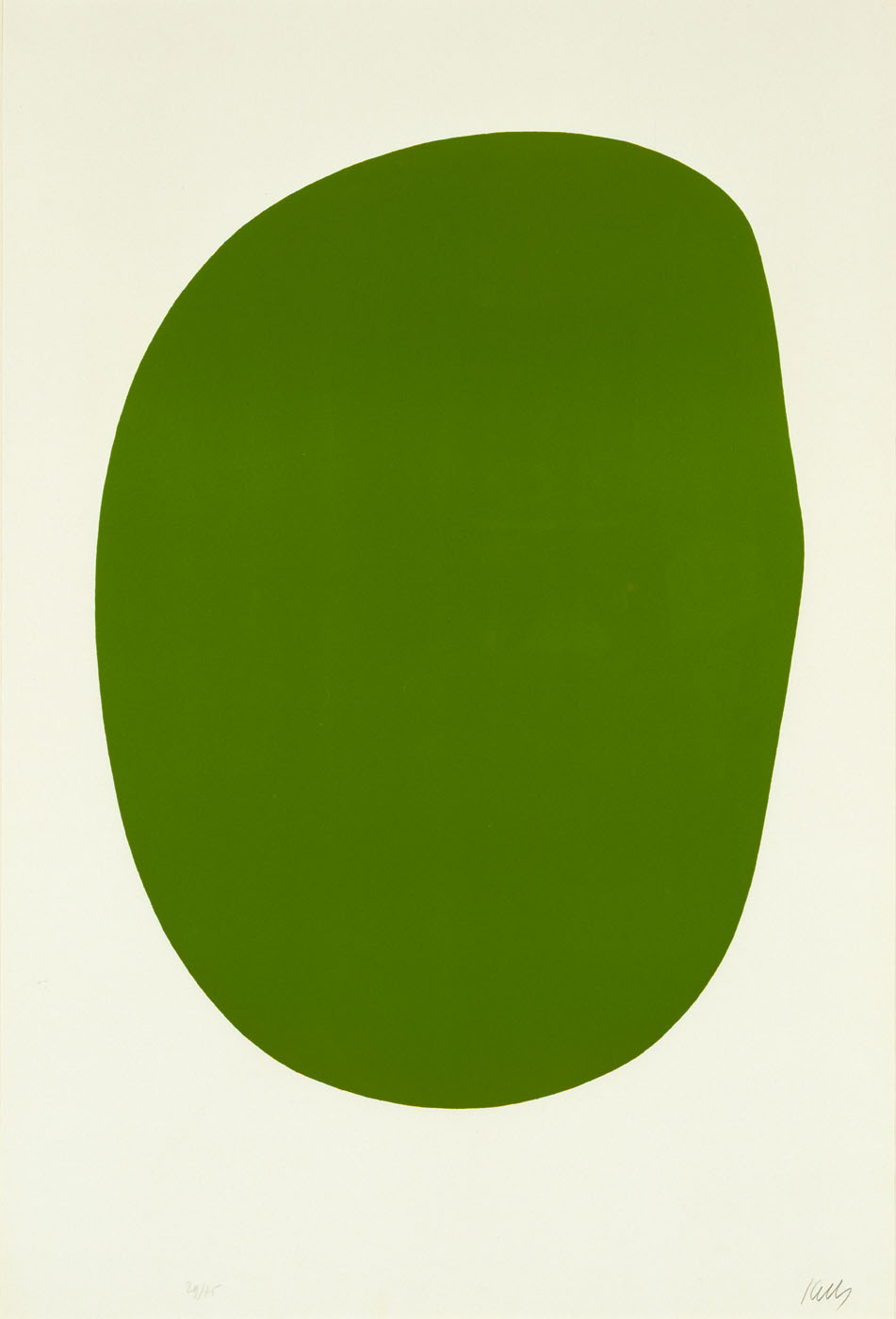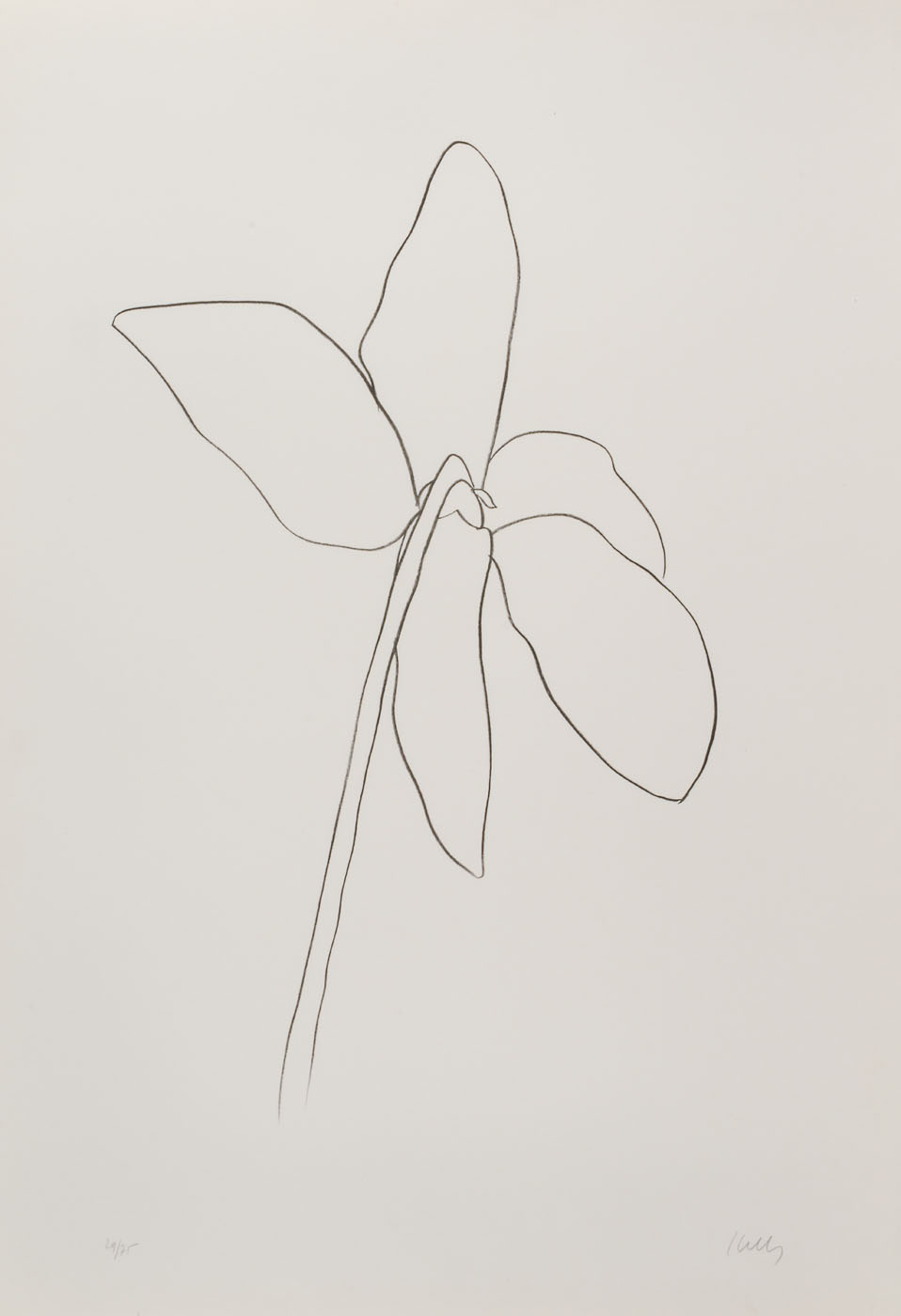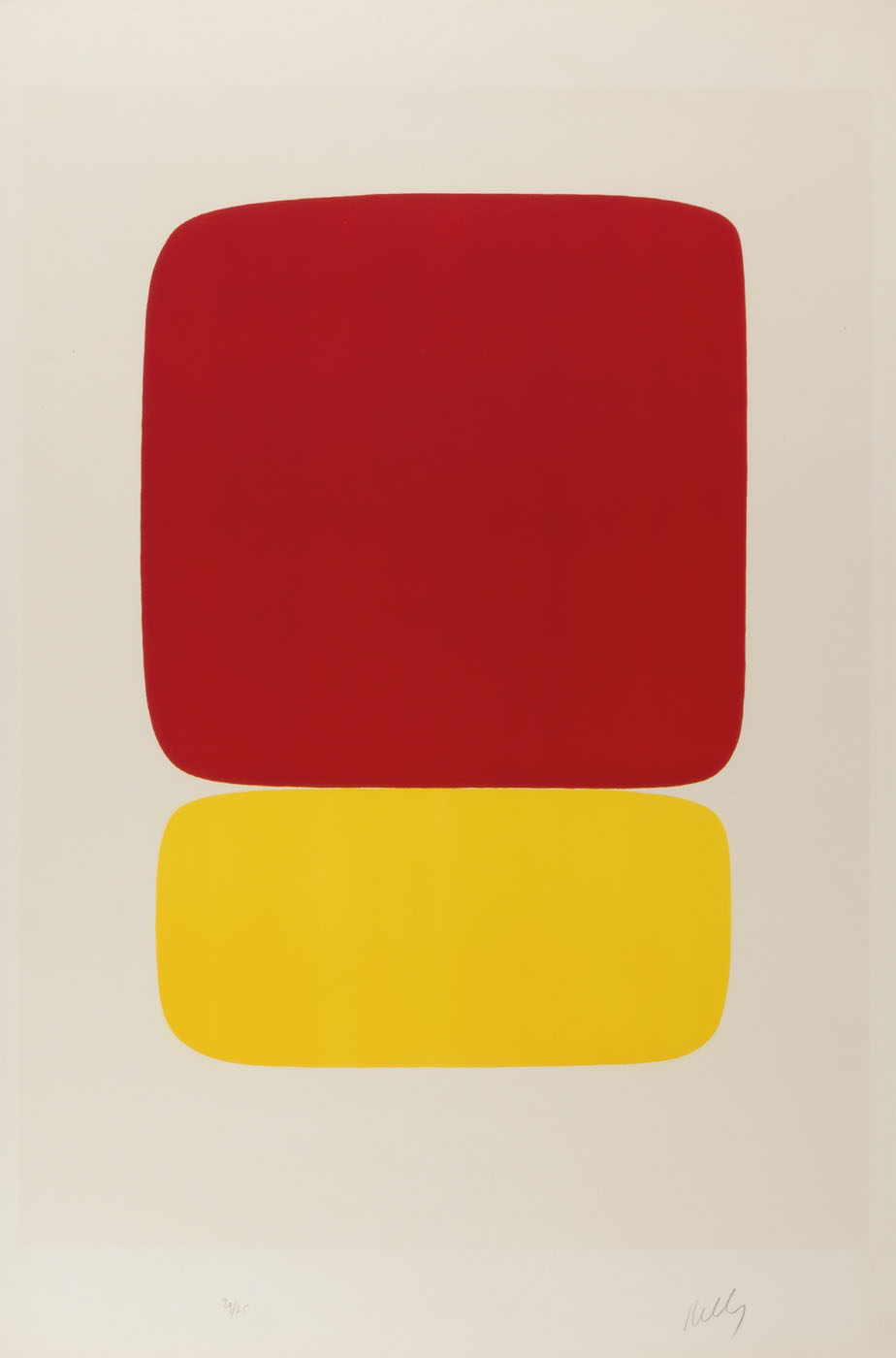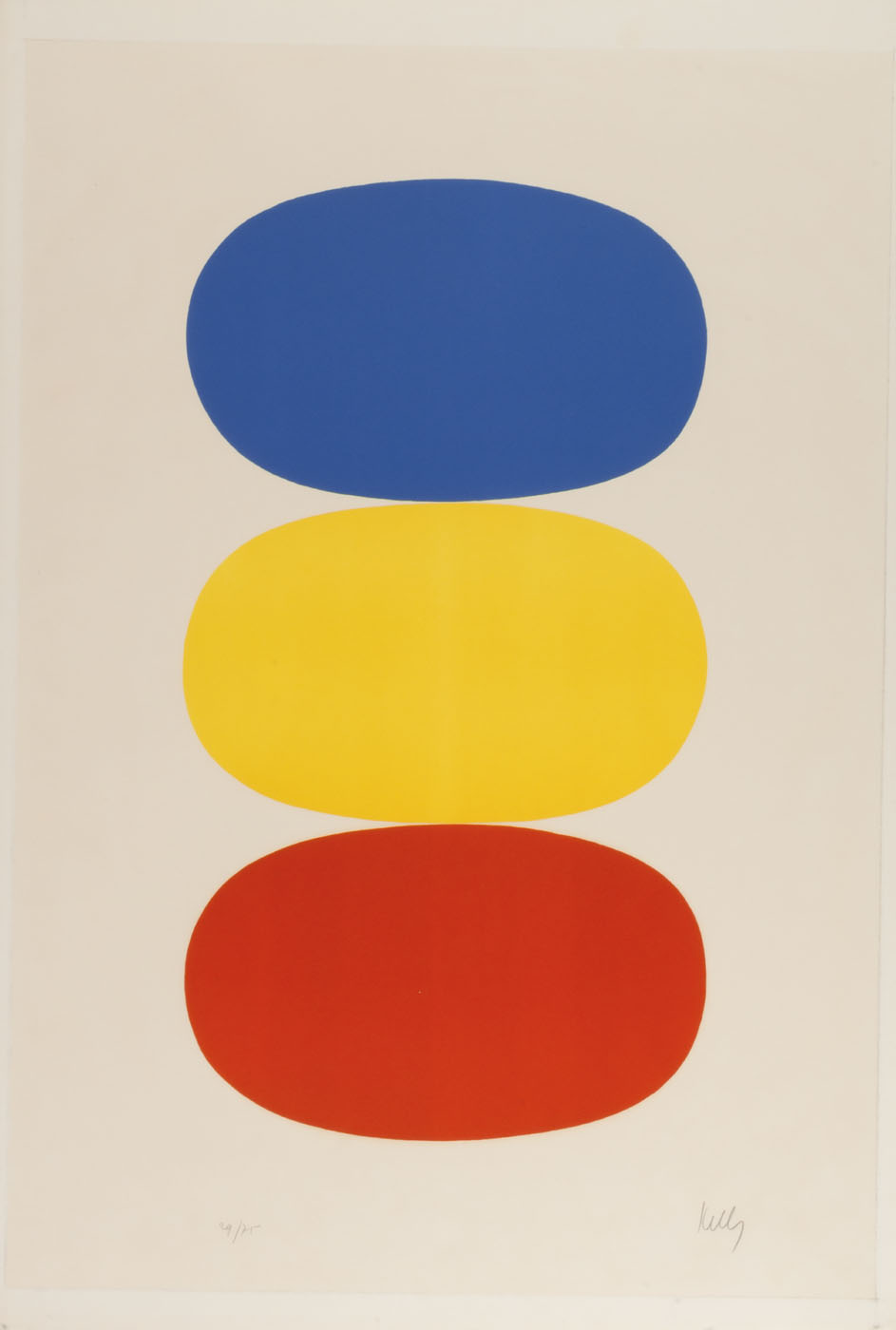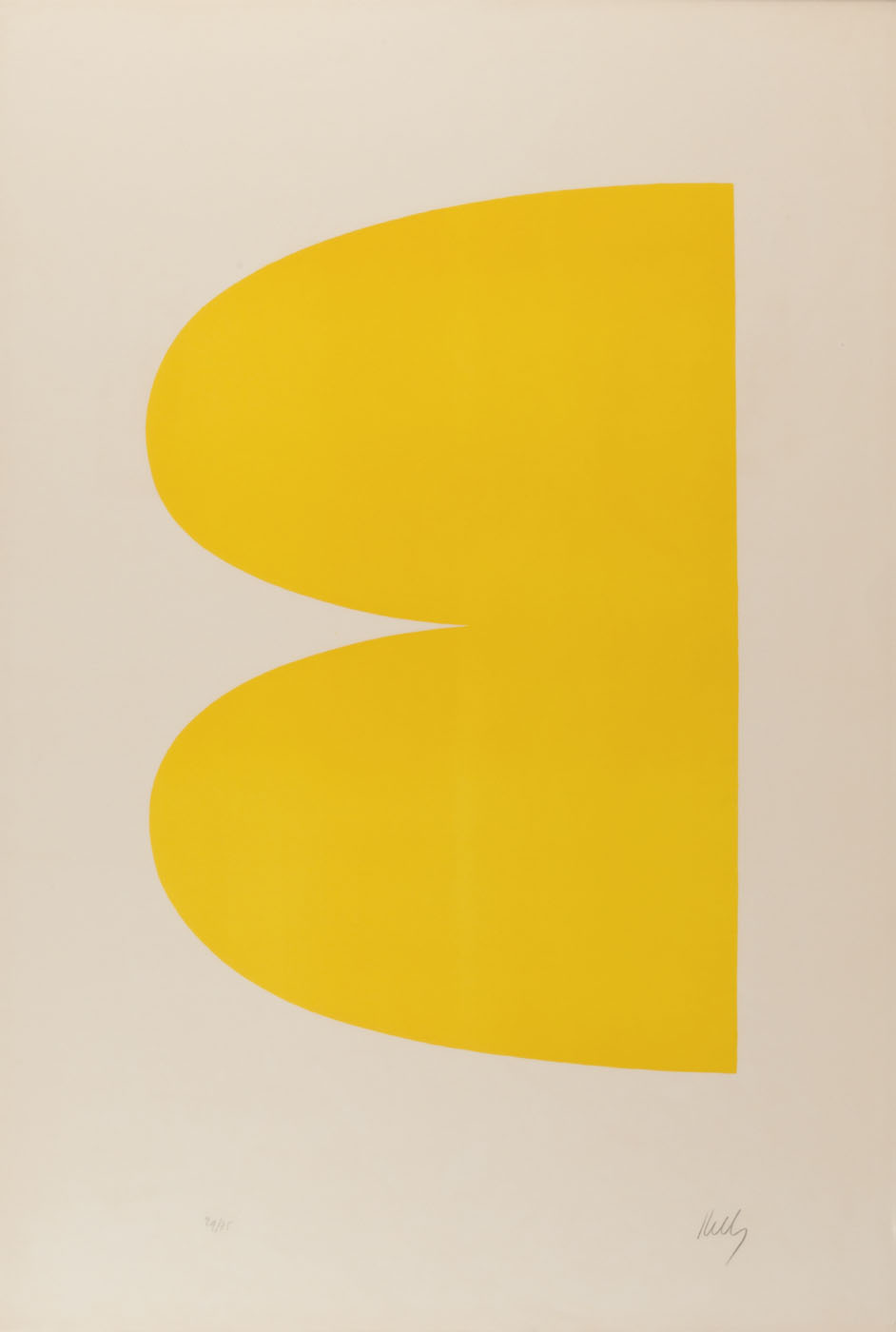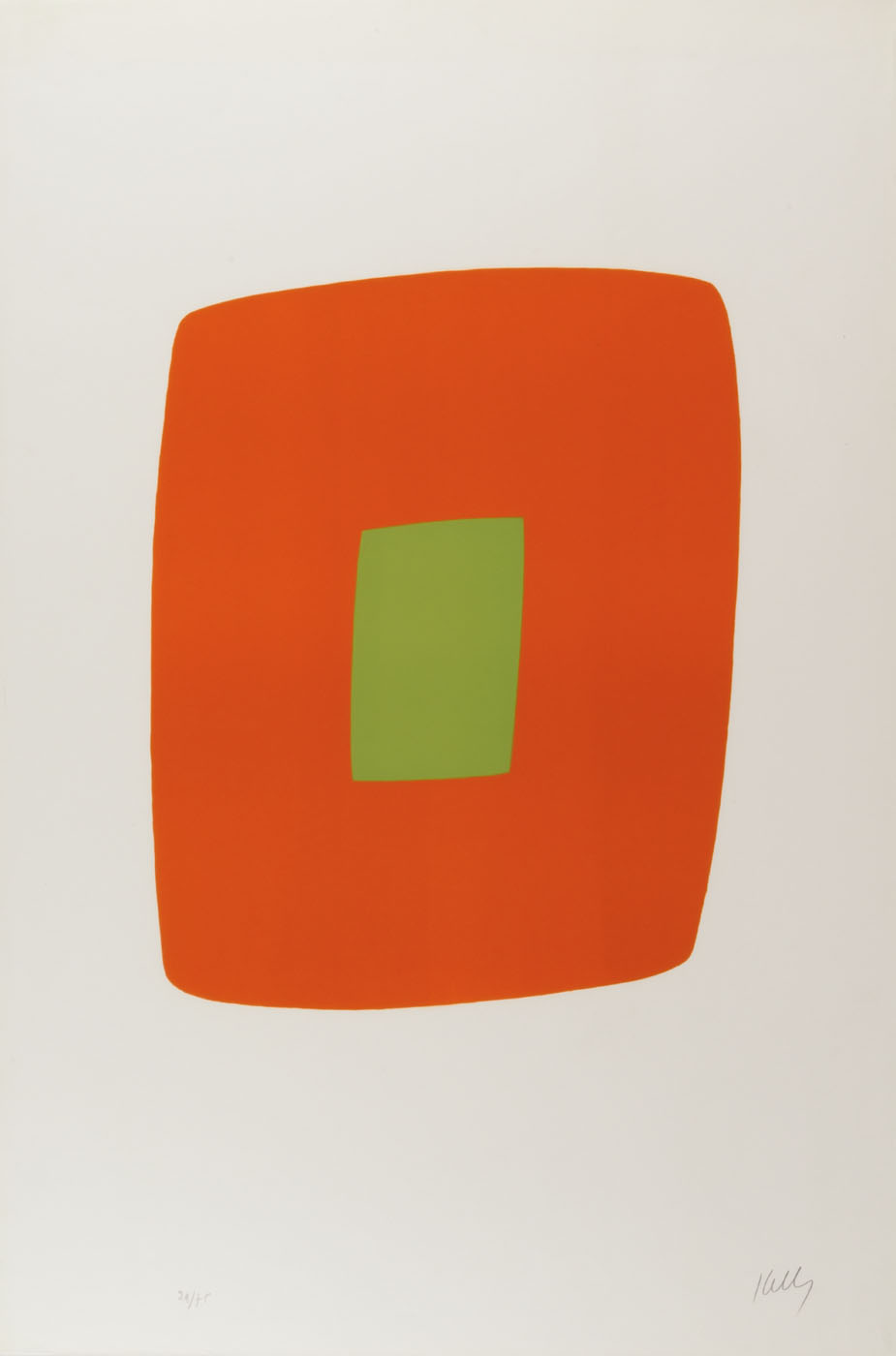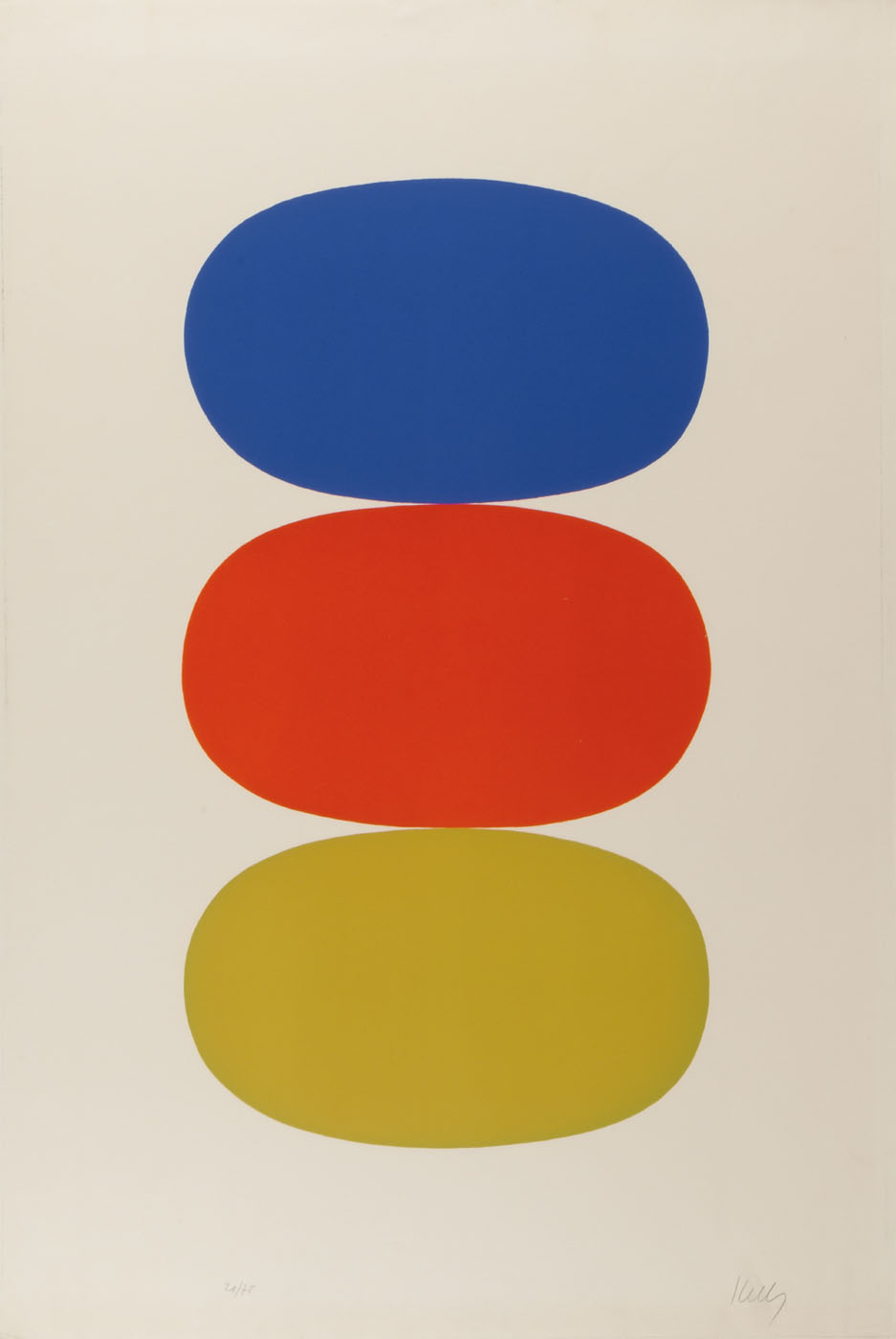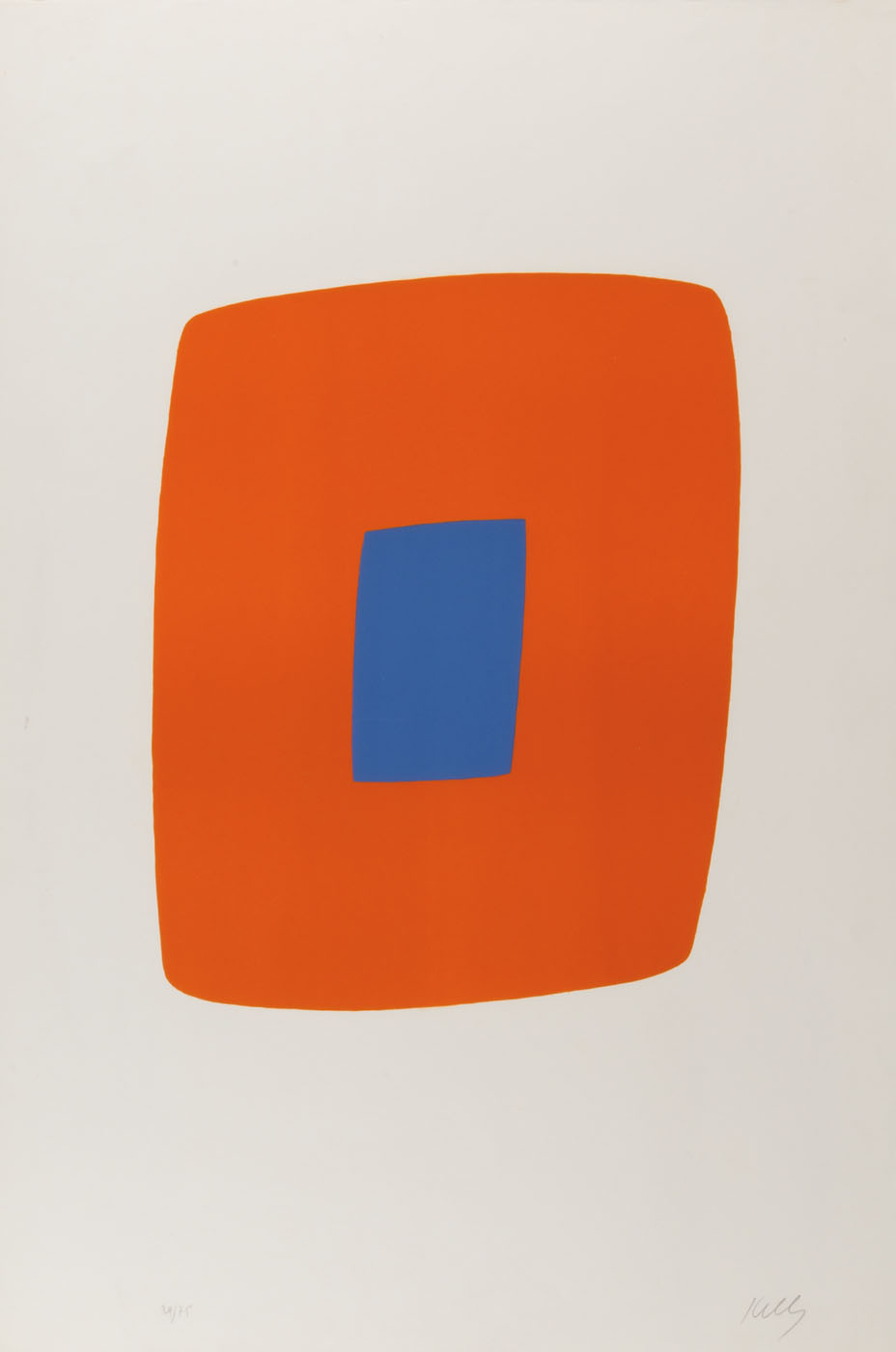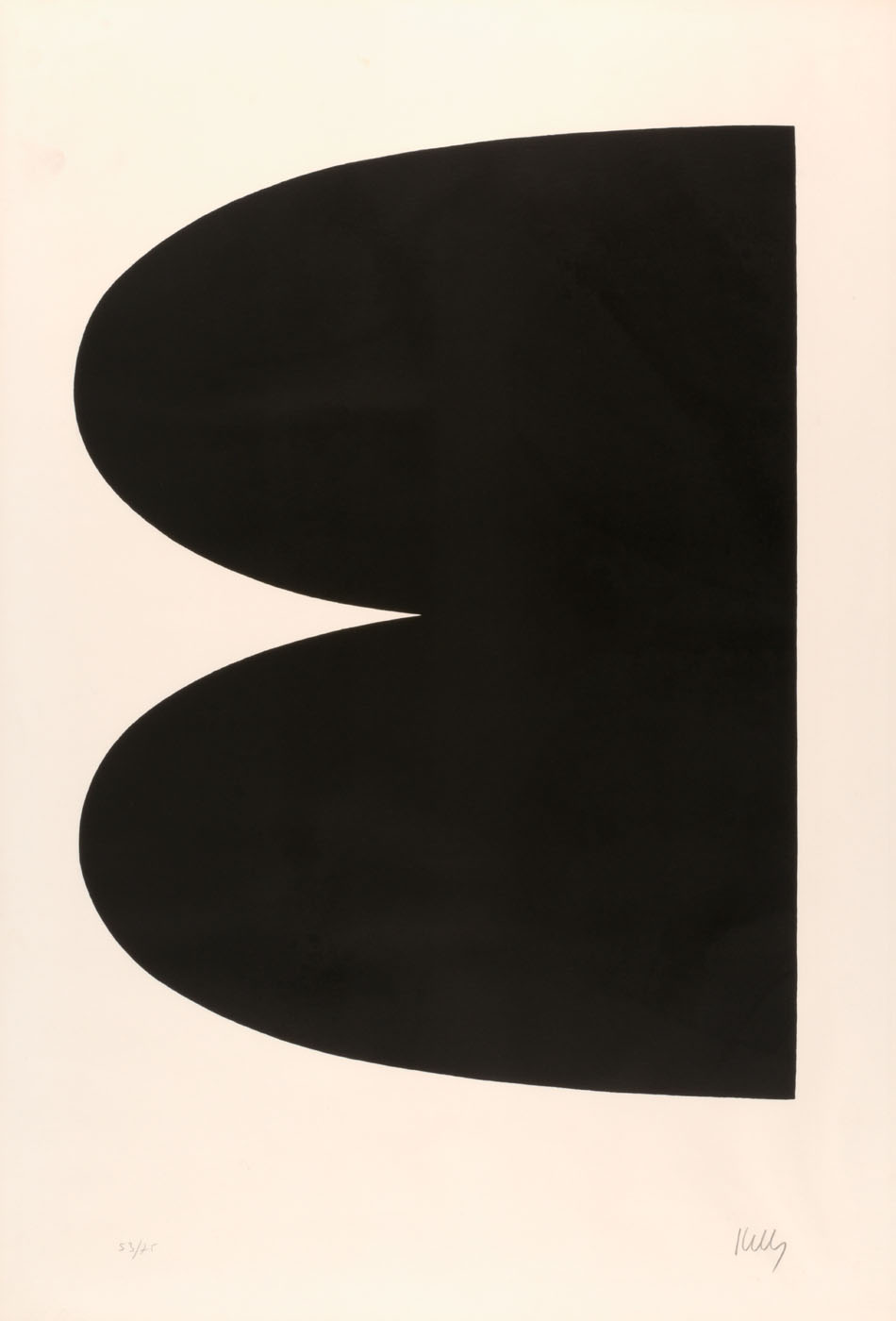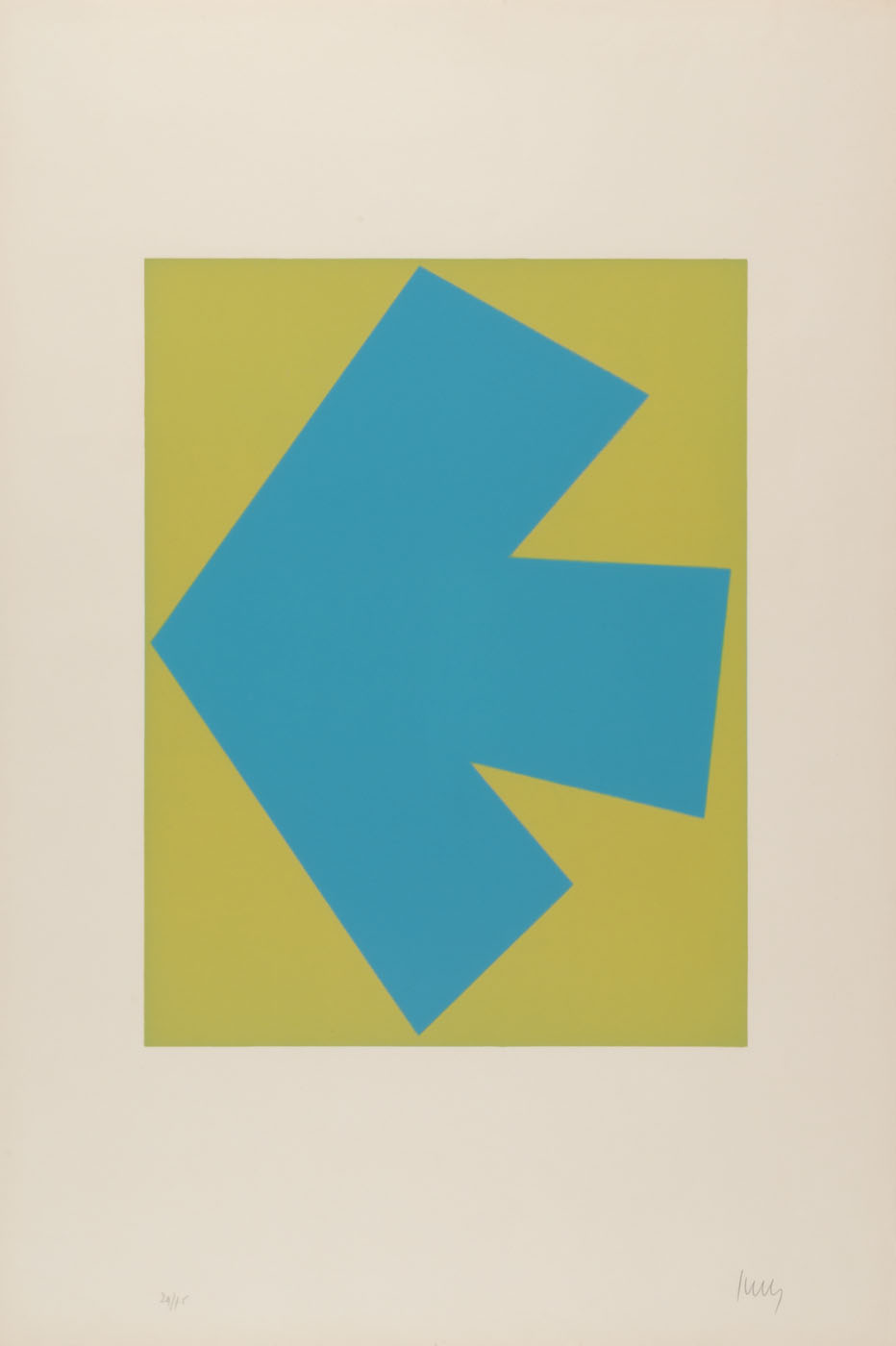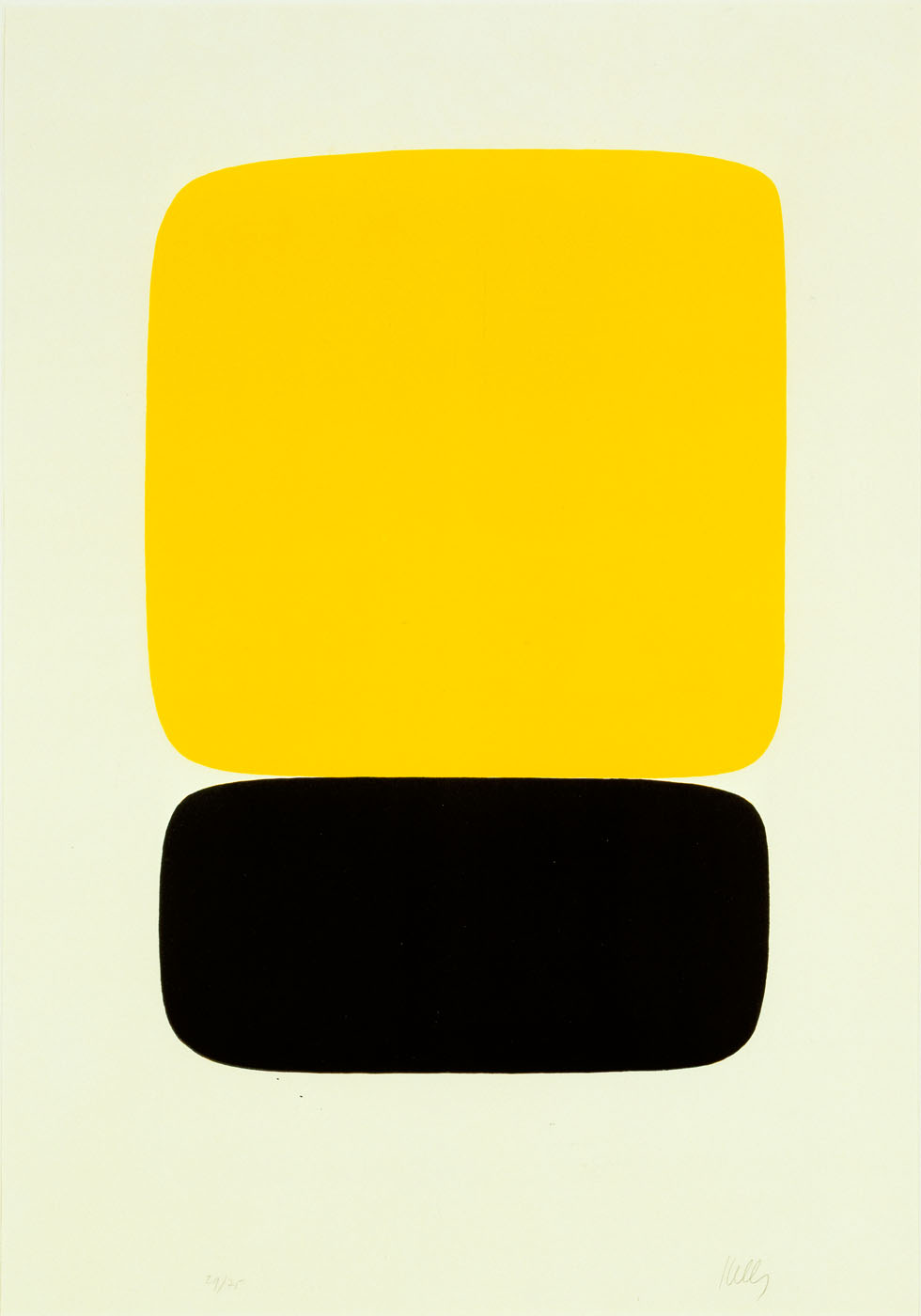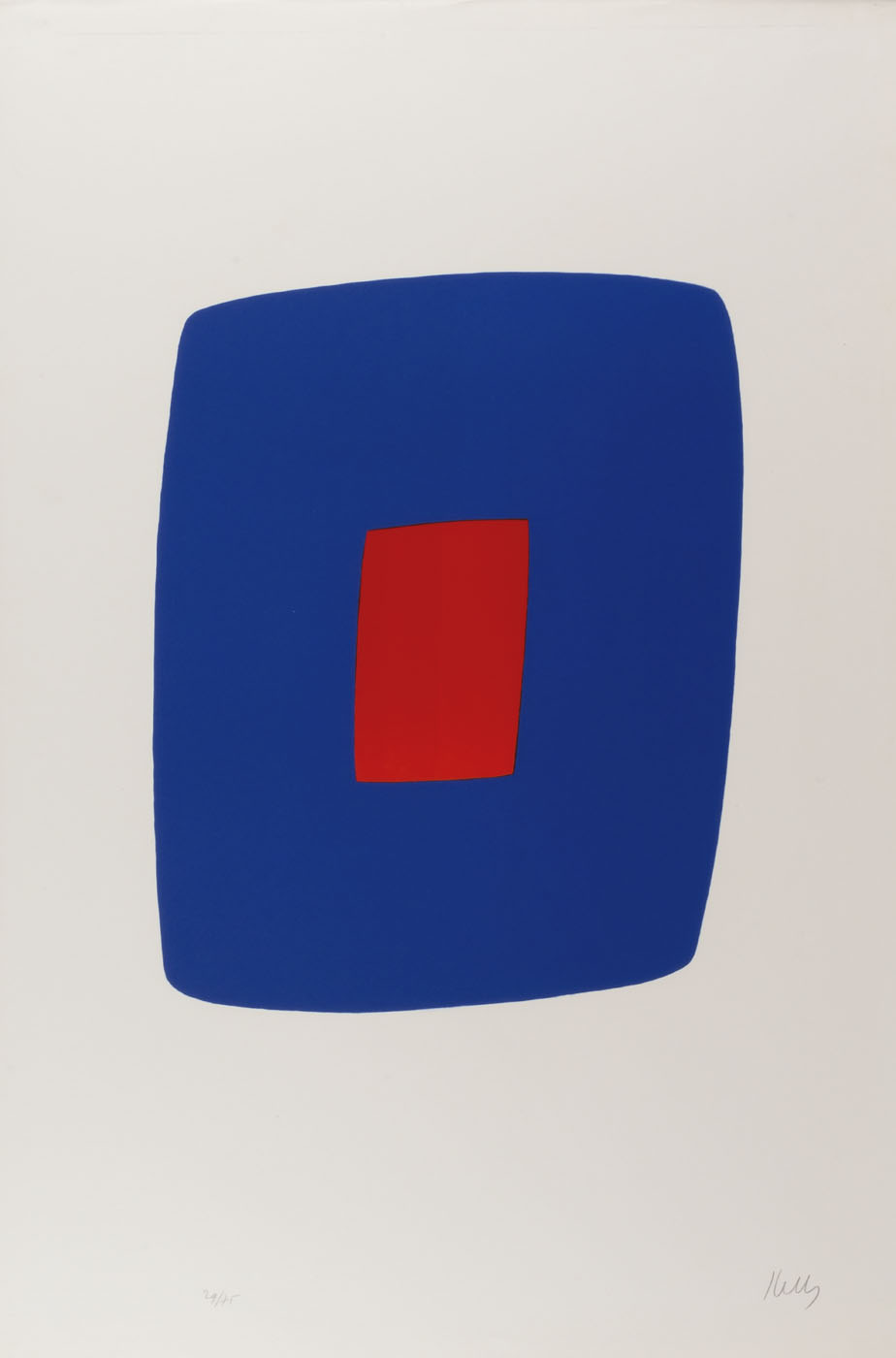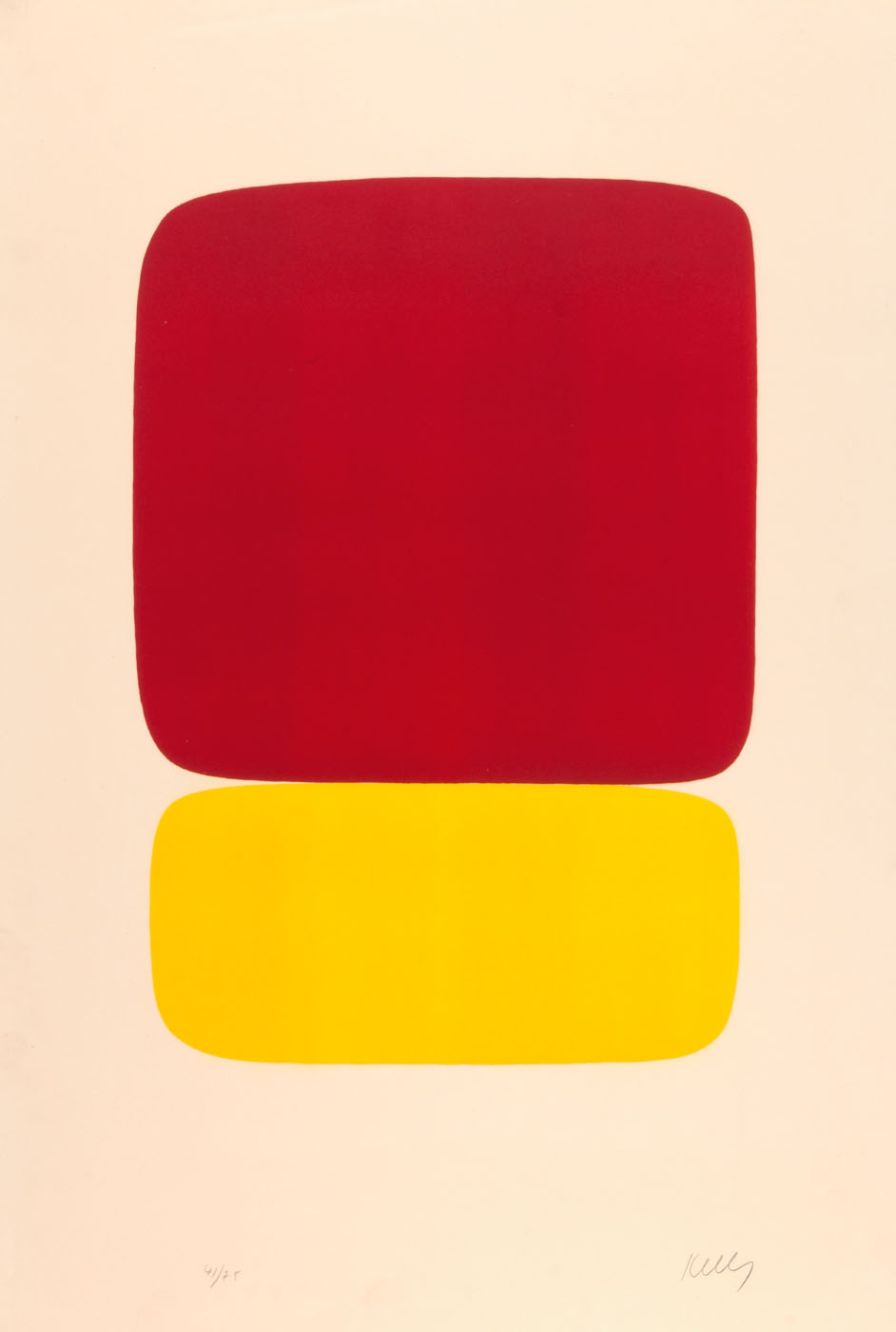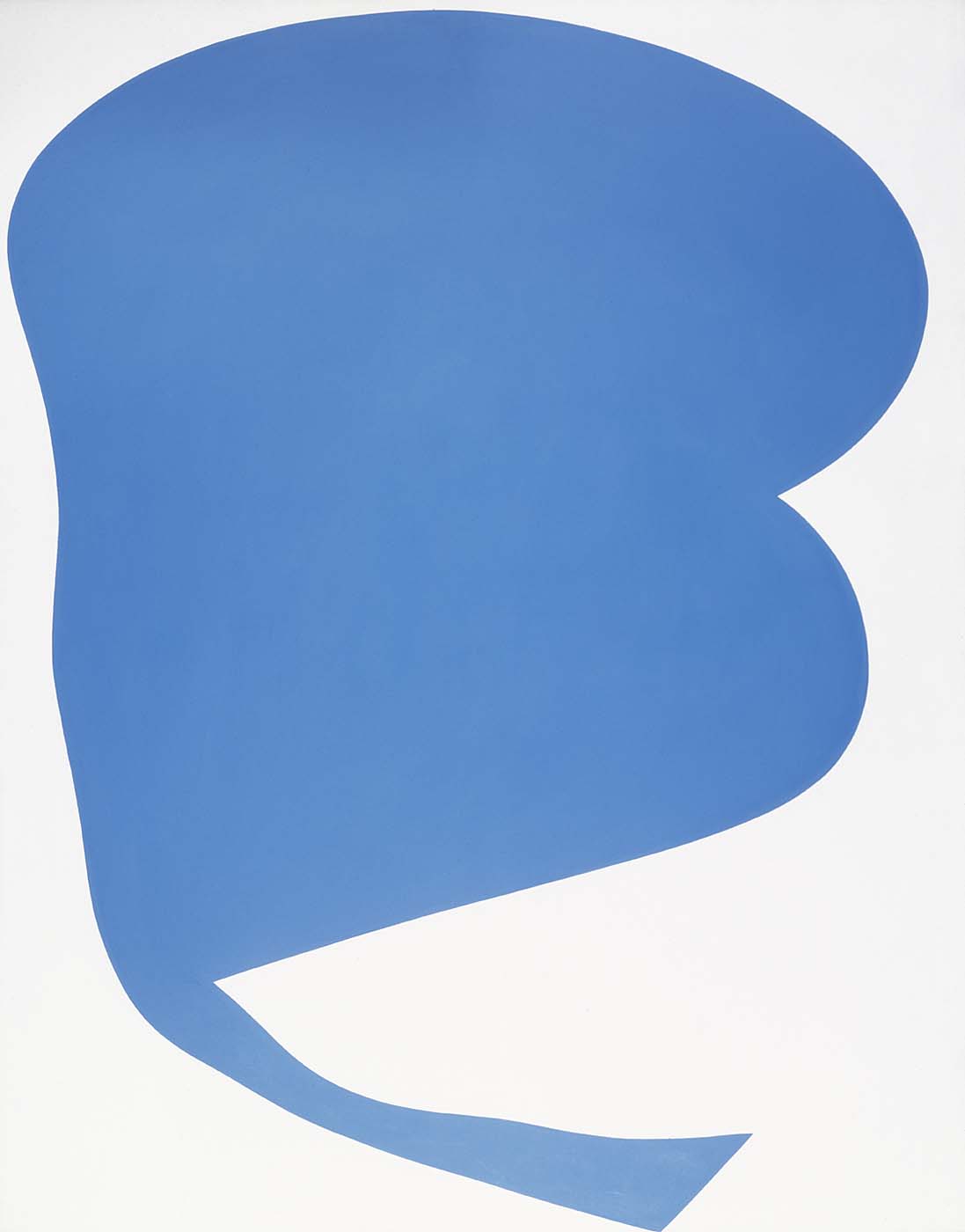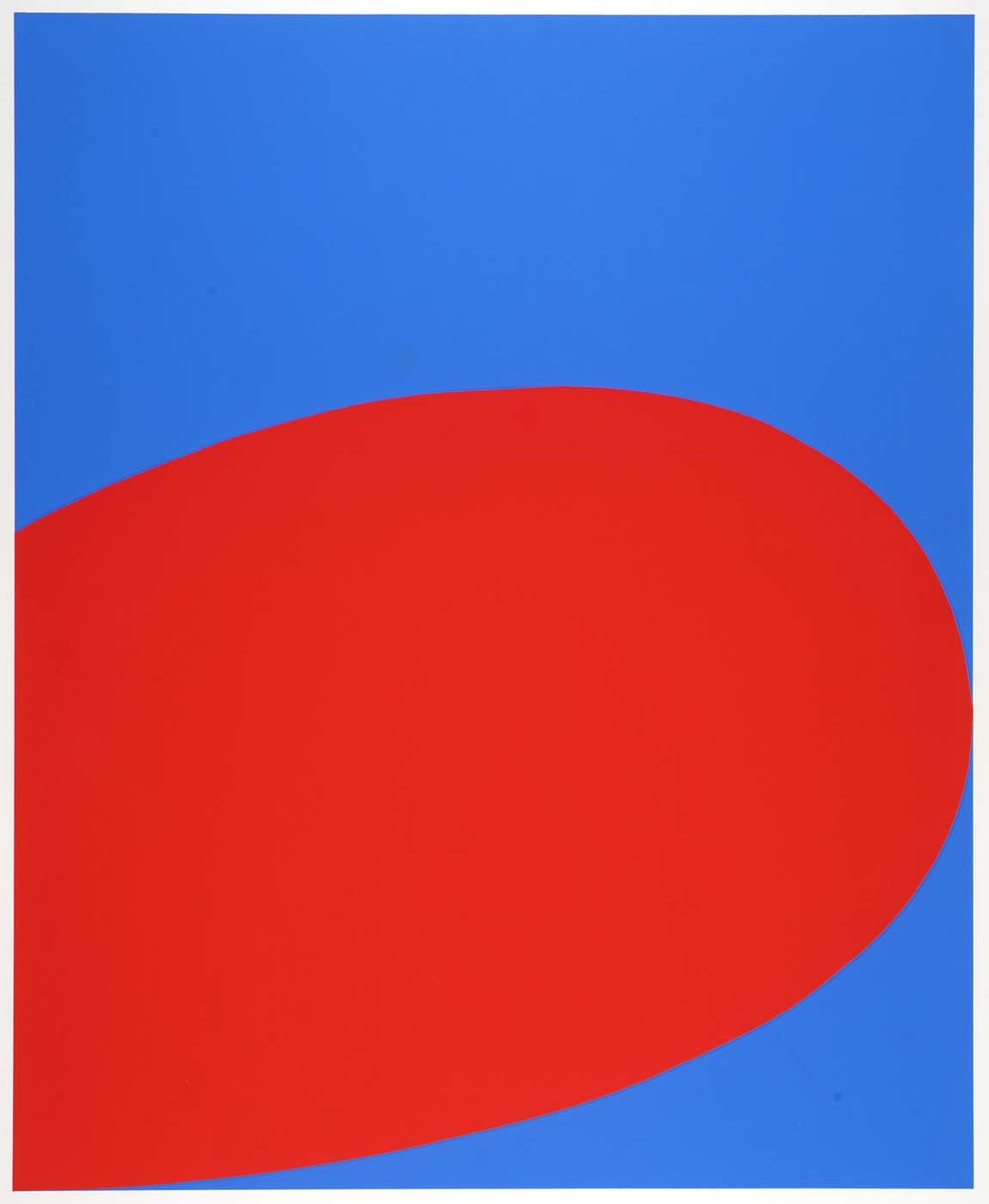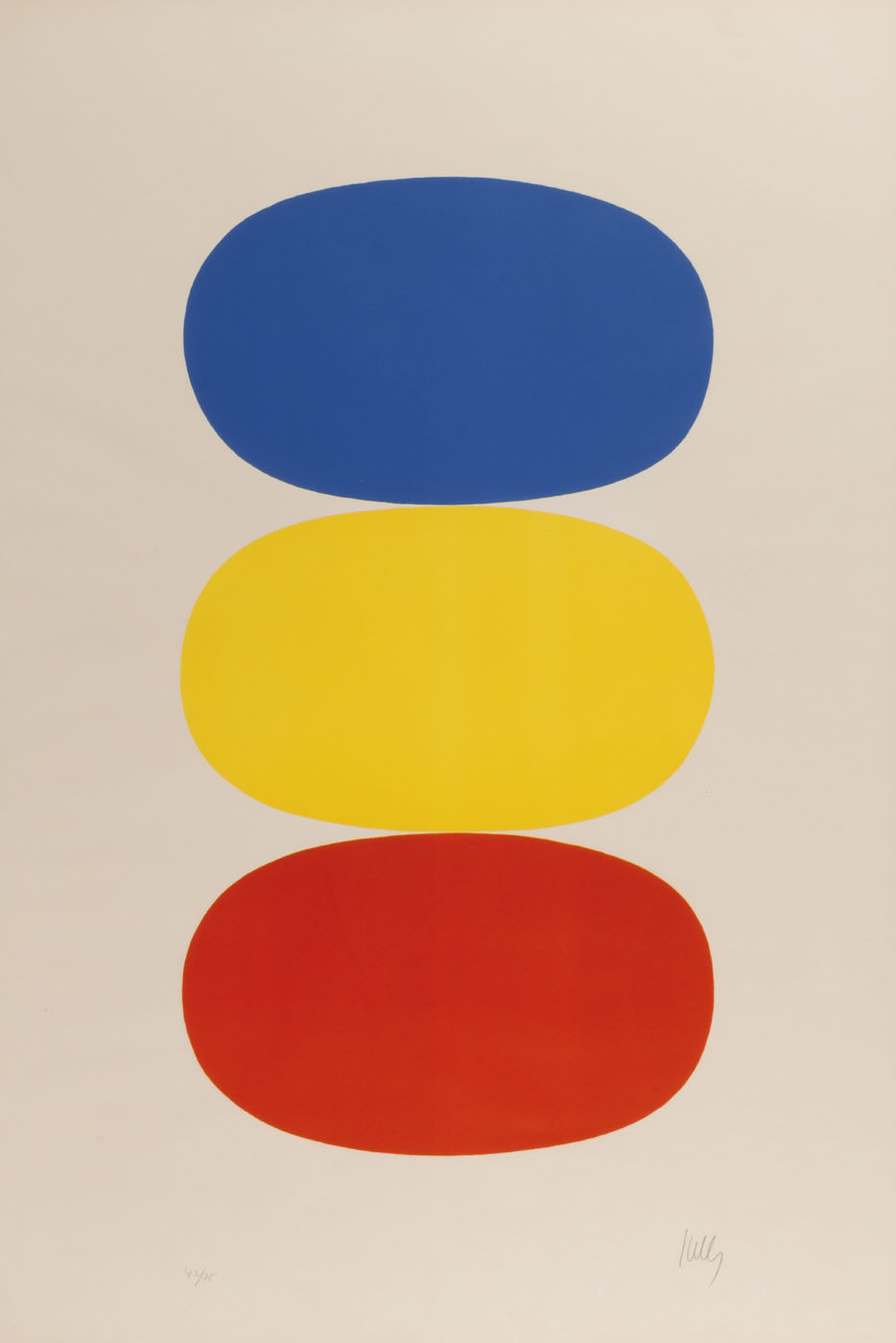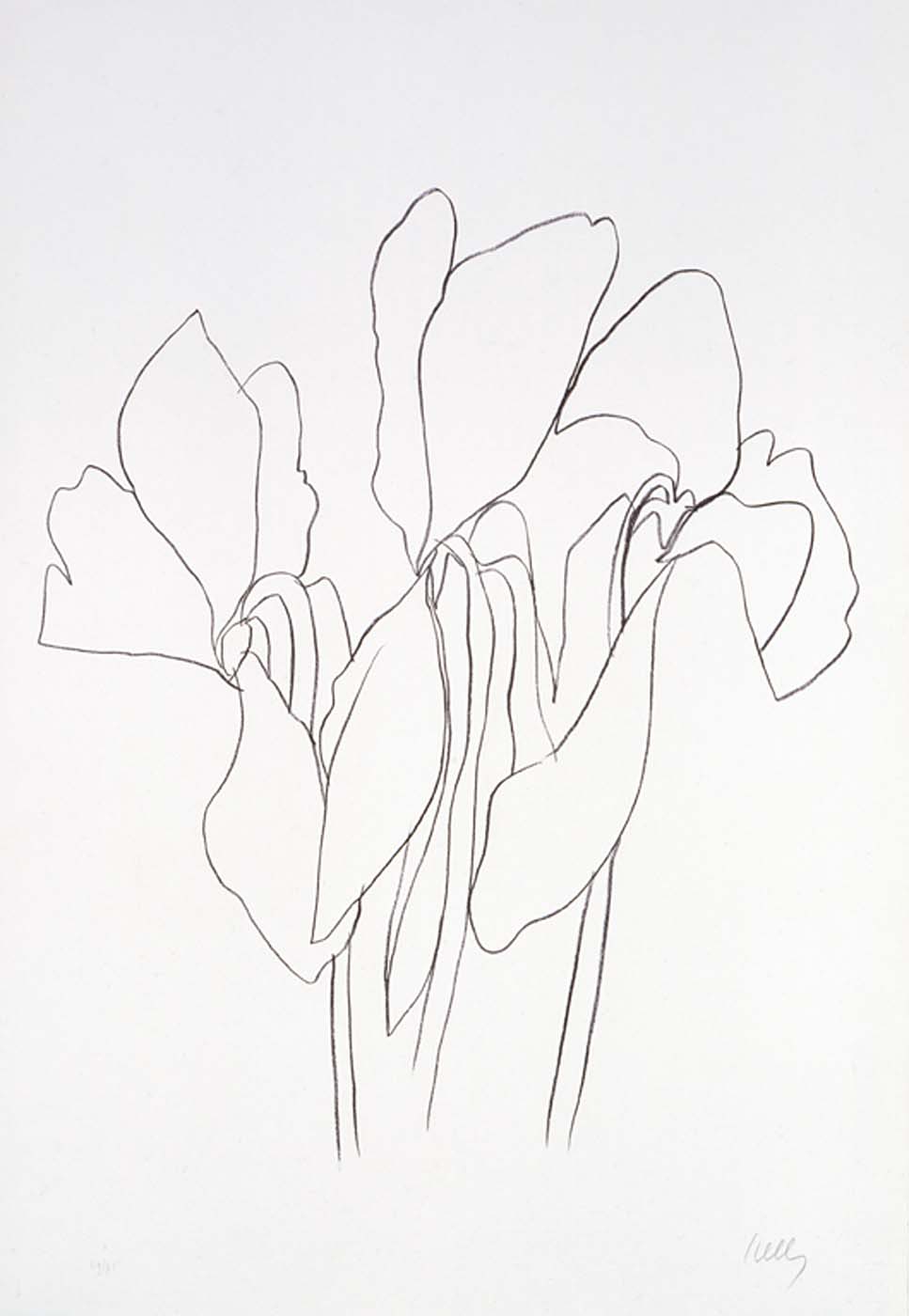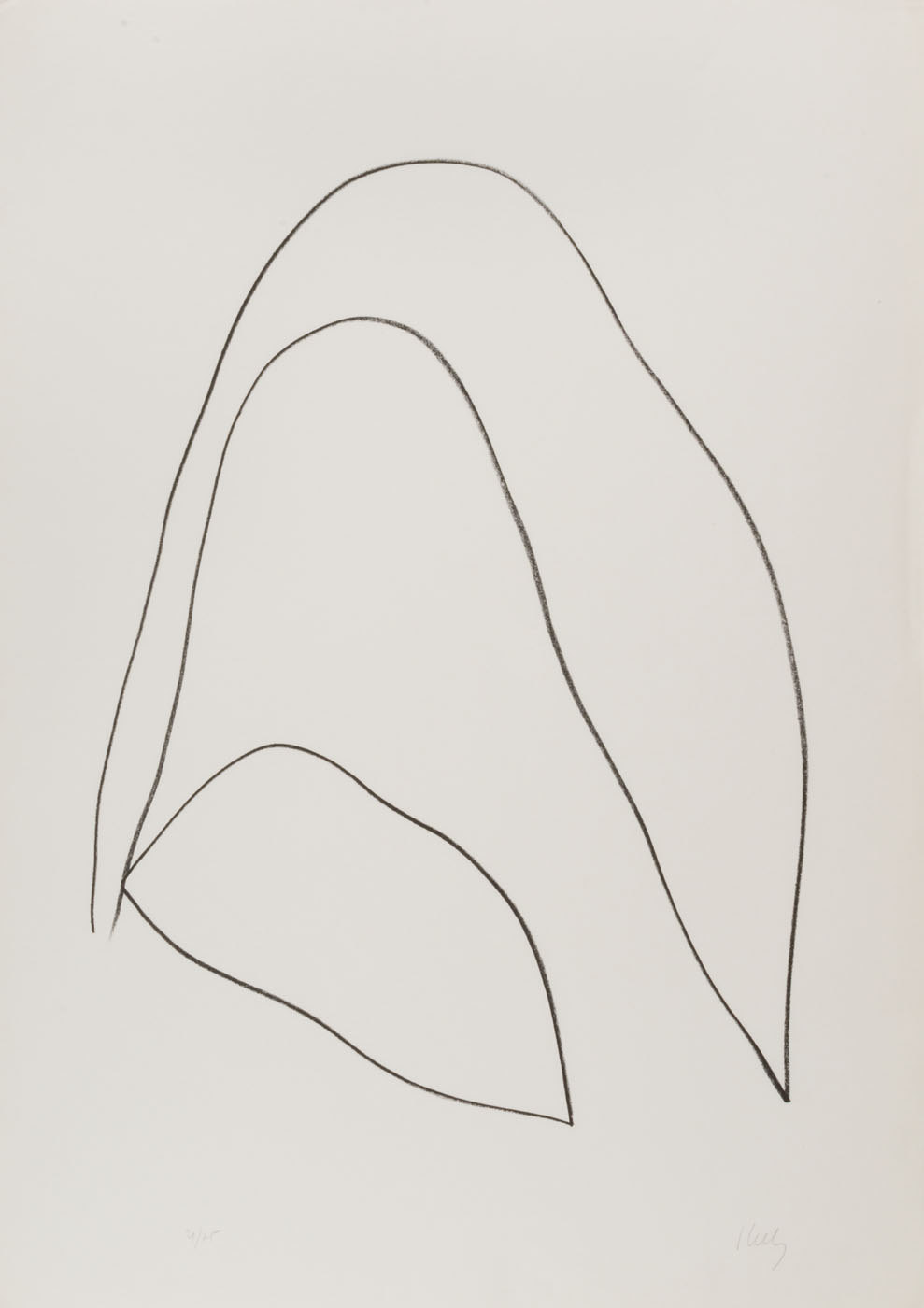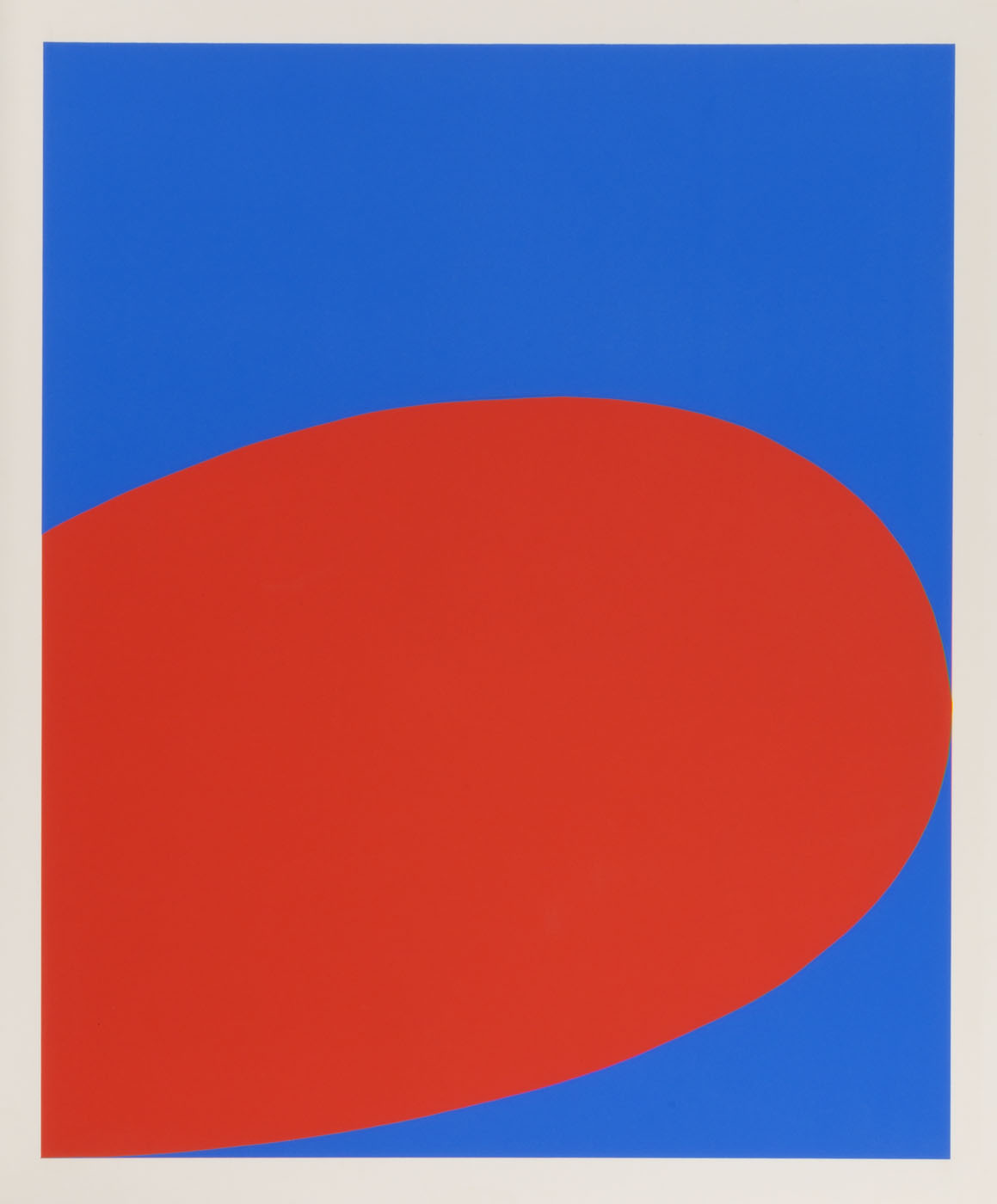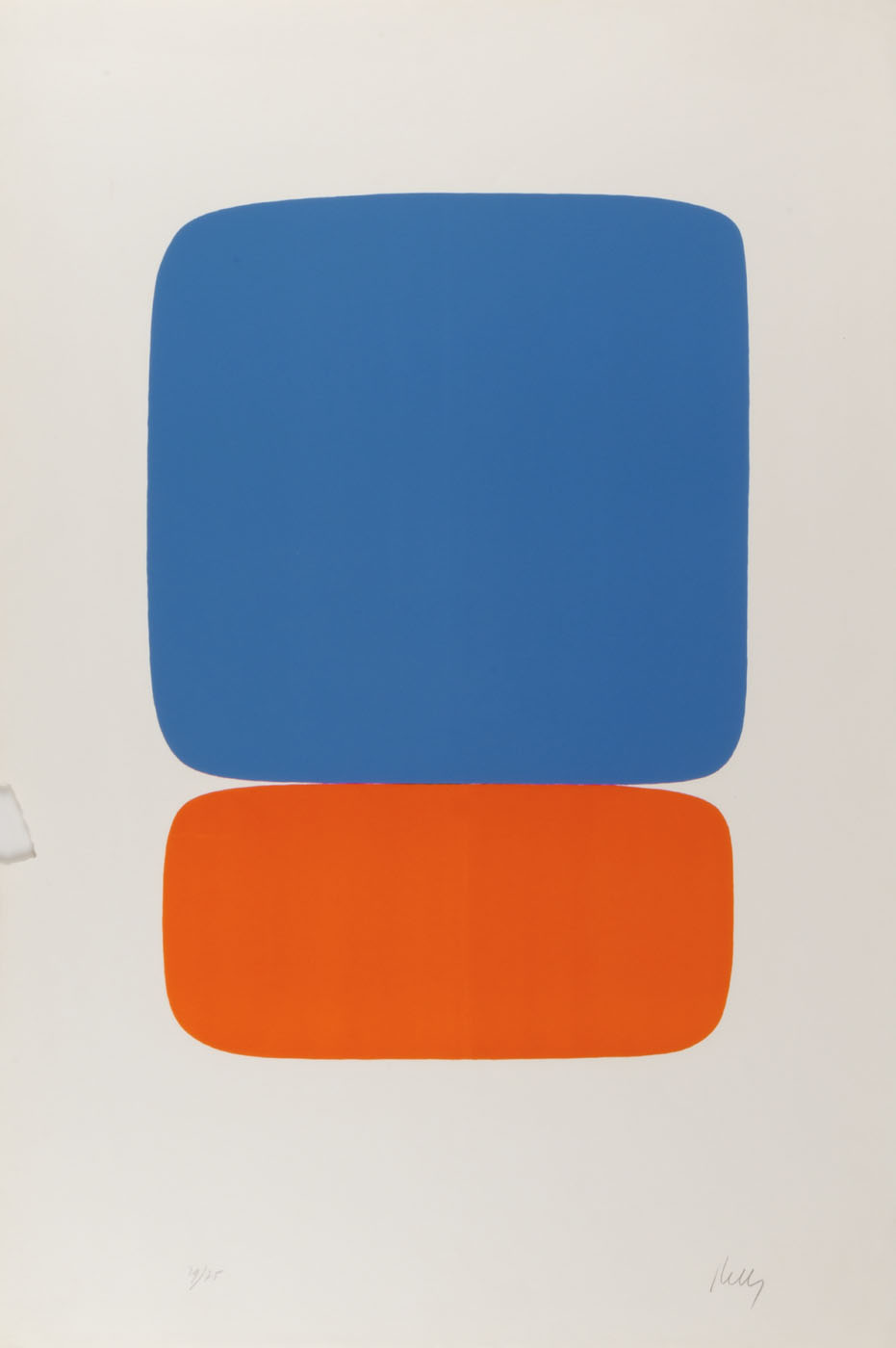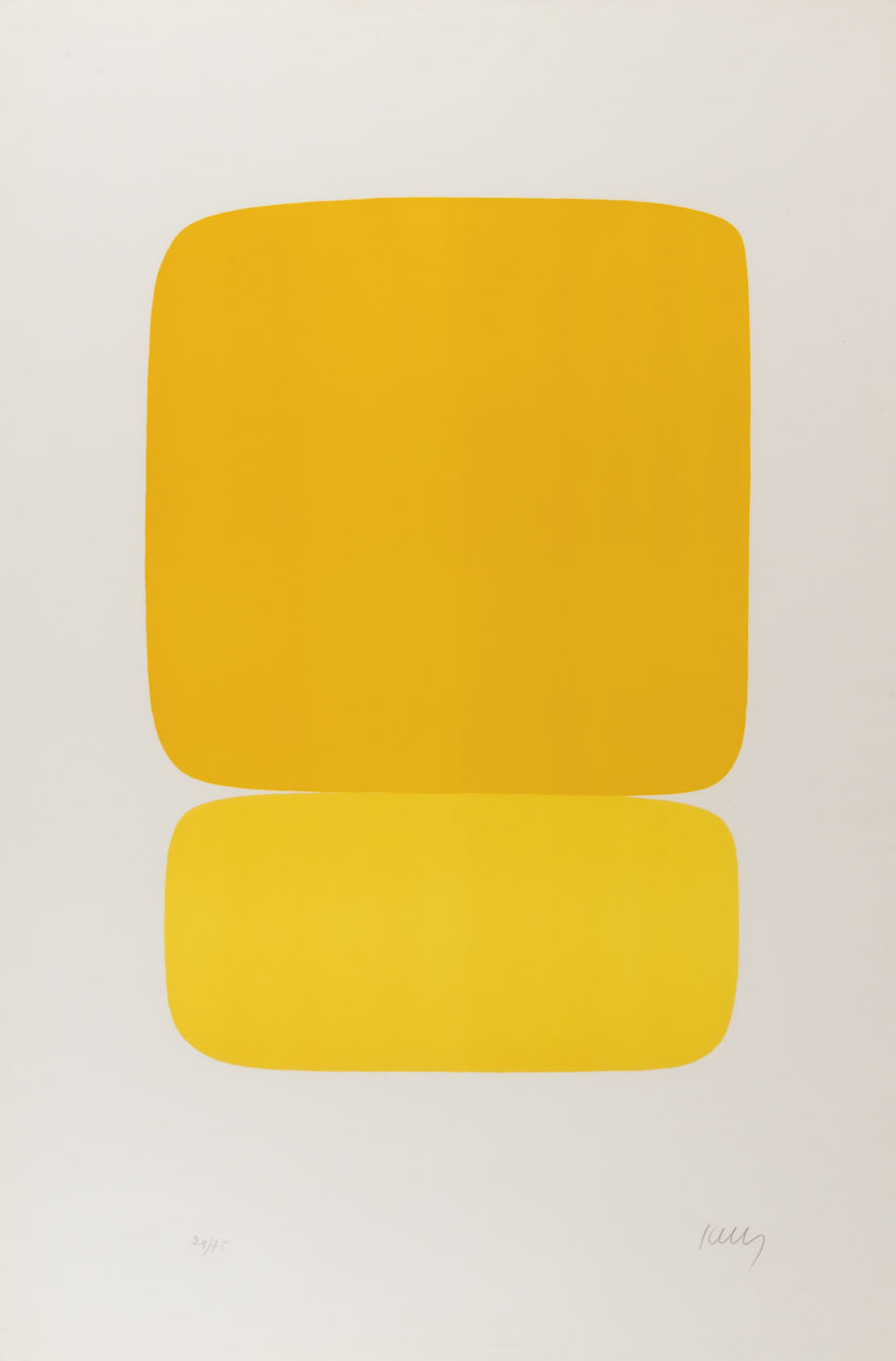Ellsworth Kelly
Considered a pioneer of hard-edge painting, Ellsworth Kelly is best known for his crisp nonrepresentational works, intensely colored and radically simplified. His early training in the applied art program at Pratt Institute, Brooklyn, was interrupted by his induction into the army in 1943. Art Historian E. C. Goossen has speculated that Kelly's assignment to a camouflage battalion provided him with invaluable lessons about the interaction of form and shadow in space, which were applied later in his collages, paintings, and sculpture.
After studying for two years at the School of the Museum of Fine Arts in Boston, Kelly went to Paris in 1948 to attend the École des Beaux-Arts until 1950. In France he encountered the works of Pablo Picasso, Henri Matisse, Jean Arp, and Piet Mondrian. His figurative work subsequently gave way to increasingly abstract paintings in which curvilinear and rectilinear forms suggest fragments of visual phenomena such as architectural elements and shadows.
In 1950 he began to explore the random selection of color and form by using collages, composed of torn details of his drawings, as the basis for his paintings. While in France Kelly also produced grid paintings built on modular and serial systems. By 1952 these concerns were expressed in large multipanel paintings in which each panel was a module of color. Kelly's concern with color as form was thus established.
After returning to the United States in 1954, Kelly worked with large single biomorphic shapes in black and white. Primary colors reappeared in his paintings after 1957, either in double or triple variations or singly in contrast with white, as in Blue on White [SAAM, 1969.47.63].
National Museum of American Art (CD-ROM) (New York and Washington D.C.: MacMillan Digital in cooperation with the National Museum of American Art, 1996

